
Transylvania
Publication Date: 15th Nov 2017
£ 16.99
Transylvania Travel Guide – Holiday information and tourist tips including Brasov highlights, Dracula legends and Bran Castle, national parks, reserves and wildlife. Also features walking and hiking routes, bear and wolf tracking, local cuisine and culture, Turda Gorge, Sibiu, Sighisoara, Biertan, Corvin Castle, Sarmizetgetusa ruins and Zarnesti.
Related products
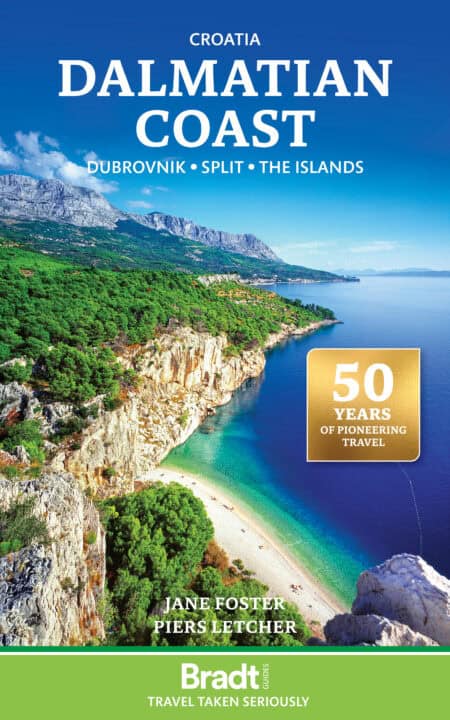
Croatia: Dalmatian Coast
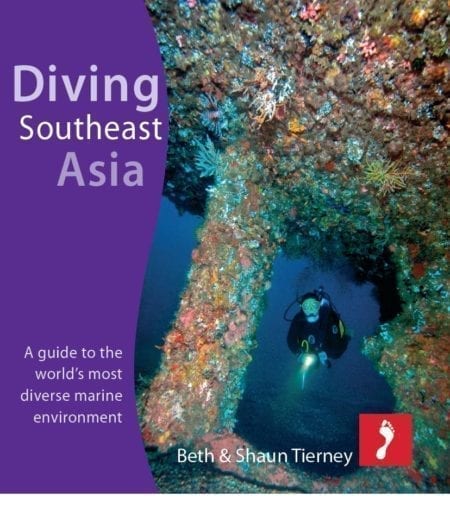
Diving South East Asia Footprint Activity & Lifestyle Guide
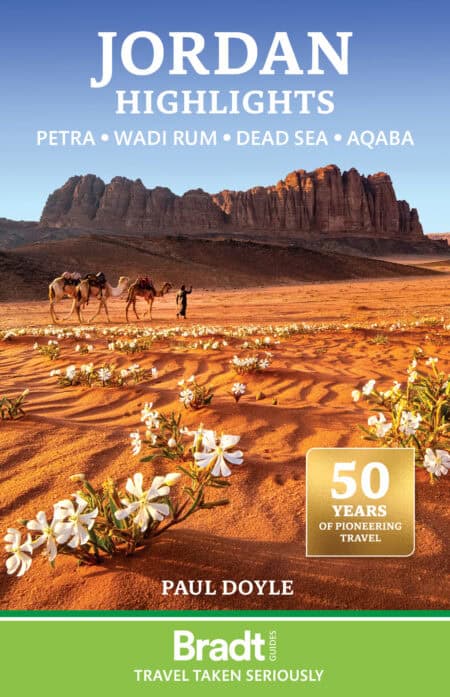
Jordan Highlights
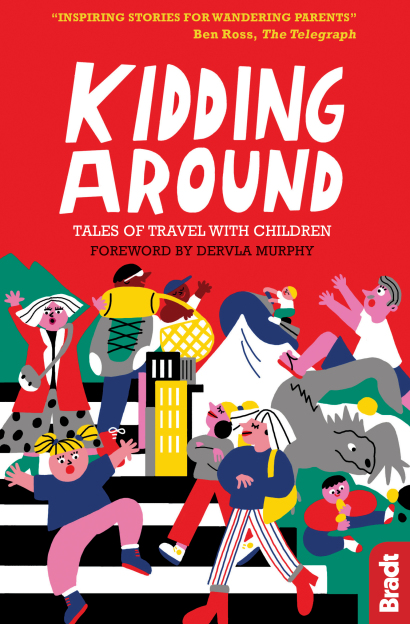
Kidding Around
About this book.
This new, third edition of Bradt’s Romania: Transylvania remains the only standalone English language guide to this legendary and enchanting region. Comprehensive chapter-per-county coverage is offered, including details to cater for the diverse range of travellers to the region, from city breaks to rural escapes, ski enthusiasts to charity volunteers. Thoroughly updated, this new edition reflects all the changes of the past few years, from improved transport infrastructure (in particular the regional airports at Cluj, Sibiu and Târgu Mures) to the completion of new motorway routes, such as that between Sibiu and Deva. Also covered are a number of striking new accommodation options: for example the sustainable guesthouse in Valea Zalanului owned by HRH The Prince of Wales, and the mountaintop retreat of Raven’s Nest in the Apuseni Mountains. More attractions have opened up, such as Baroque palaces formerly owned by Hungarian aristocrats, seized under the Communist regime and now being restored by the descendants of their original owners. And the region is developing its offer for new types of tourism, such as summer rock festivals, notably the Untold Festival at Cluj and Electric Castle Festival at Bontida. Transylvania, literally the ‘land beyond the forest’, is a wild, wooded, intensely romantic region, filled with mountains, gorges and valleys, myths and legends, dragons, bears, wolves – and vampires. Bram Stoker called it ‘one of the wildest and least-known parts of Europe’ a description which remains true today. One of the most beautiful regions in central Europe and home to three UNESCO World Heritage Sites, Transylvania preserves its cultural and artistic treasures in a unique landscape, bordered on three sides by the Carpathian Mountains. The hay meadows of the lower Carpathians form a man-made, high nature-value grassland ecosystem of extraordinary diversity, offering a beautiful display of wild flowers. The Carpathians are home too to lynx, wild boar, and one of Europe’s largest populations of brown bear. Other natural phenomena include the Scarisoara ice cave in the Apuseni Mountains and the Sfanta Ana volcanic crater lake in Harghita. Whatever your interests, with Bradt’s Romania: Transylvania, you can discover all of the region’s many and varied attractions.
About the Author
Born and educated in the UK, Lucy Mallows worked for 12 years in Budapest as a reporter. She first visited Transylvania in 1997, but her links with Romania go back to the late 1980s when she worked as a volunteer for Operation Romanian Villages, and to an early childhood fairytale The Lost Princess, written in 1924 by Queen Marie of Romania. Lucy Mallows is also the author of the Bradt guides to Bratislava and Slovakia. She now lives in Brighton from where she works as a freelance photojournalist and translator. Paul Brummell is the British Ambassador to Romania. A career diplomat, he joined the Foreign and Commonwealth Office in 1987. He has served as British Ambassador to Turkmenistan and to Kazakhstan (as well as non-resident Ambassador to Kyrgyzstan) and High Commissioner to the countries of the eastern Caribbean, based in Barbados. He is the author of Bradt Travel Guides to Turkmenistan and to Kazakhstan, and in 2016 was awarded the CMG for services to British foreign policy.
Additional Information
Introduction PART ONE GENERAL INFORMATION Chapter 1 Background Information Geography, Climate, Natural history and conservation, History, Government and politics, Economy, People, Language, Religion, Education, Culture Chapter 2 Practical Information When to visit, Highlights, Suggested itineraries, Tour operators, Tourist offices, Red Tape, Embassies and consulates, Getting there and away, Health, Safety, Women travellers, Travelling with children, Travelling with a disability, Gay and lesbian travellers, What to take, Electricity, Money, Budgeting, Getting around, Accommodation, Eating and drinking, Public holidays and festivals, Shopping, Arts and entertainment, Cultural attractions, Sports and activities , Media and communications, Maps, Business, Buying property, Cultural etiquette, Travelling positively
PART TWO THE GUIDE Chapter 3 Brasov County Brasov, Places to visit en route from Bucharest to Brasov, Entering Brasov County and Transylvania Chapter 4 Covasna County Sfântu Gheorghe, Around Sfântu Gheorghe Chapter 5 Harghita County Miercurea-Ciuc, Heading south and west, Heading north Chapter 6 Mures County Târgu Mures, Heading east, Heading north, Sighisoara , Around Sighisoara Chapter 7 Sibiu County Sibiu, Heading south and west, Heading north, Heading east Chapter 8 Hunedoara County Deva, Other sights in Hunedoara County Chapter 9 Alba County Alba Iulia, Heading south, The Apuseni Mountains, Heading north from Alba Iulia Chapter 10 Cluj County Cluj-Napoca, Heading west, Heading north, Heading southeast Chapter 11 Bistrita-Nasaud County Bistrita, Other sights in Bistrita-Nasaud County Chapter 12 Salaj County Zalau, Other sights in Salaj County Appendix 1 Language Appendix 2 Further Information Index
Items related to The Tourist's Guide to Transylvania: A Traveller's...
The tourist's guide to transylvania: a traveller's handbook of count dracula's kingdom - hardcover.

This specific ISBN edition is currently not available.
- About this edition
"synopsis" may belong to another edition of this title.
- Publisher Octopus Books Limited
- Publication date 1981
- ISBN 10 0706416023
- ISBN 13 9780706416022
- Binding Hardcover
- Edition number 1
- Number of pages 80
Convert currency
Shipping: US$ 6.13 From United Kingdom to U.S.A.
Add to Basket
Other Popular Editions of the Same Title
Featured edition.
ISBN 10: 0861780760 ISBN 13: 9780861780761 Publisher: Cathay Books, 1981 Hardcover
Top Search Results from the AbeBooks Marketplace
The tourist's guide to transylvania.
Book Description Hardback. Condition: Very Good. The book has been read, but is in excellent condition. Pages are intact and not marred by notes or highlighting. The spine remains undamaged. Seller Inventory # GOR003963747
More information about this seller | Contact seller
Book Description Condition: Good. Most items will be dispatched the same or the next working day. Seller Inventory # wbs8427056369
The tourist's guide to Transylvania
A traveller's handbook of count dracula's kingdom, by ignatius deludes.
- 1 Want to read
- 0 Currently reading
- 0 Have read

My Reading Lists:
Use this Work
Create a new list
My book notes.
My private notes about this edition:
Check nearby libraries
- Library.link
Buy this book
This edition doesn't have a description yet. Can you add one ?
Showing 1 featured edition. View all 1 editions?
Add another edition?
Book Details
Edition notes, the physical object, community reviews (0).
- Created October 31, 2008
- 8 revisions
Wikipedia citation
Copy and paste this code into your Wikipedia page. Need help?
Transylvania Travel Guide
Book your individual trip , stress-free with local travel experts
Select Month
- roughguides.com
- transylvania
- Travel guide
- Itineraries
- Local Experts
- Travel Advice
- Accommodation
Plan your tailor-made trip with a local expert
Book securely with money-back guarantee
Travel stress-free with local assistance and 24/7 support
Thanks to Bram Stoker and Hollywood, Transylvania (from the Latin for “beyond the forest”) is famed as the homeland of Dracula, a mountainous place where storms lash medieval hamlets, while wolves – or werewolves – howl from the surrounding woods. The fictitious image is accurate up to a point: the scenery is breathtakingly dramatic, especially in the Prahova valley , the Turda and Bicaz gorges and around the high passes; there are spooky Gothic citadels, around Braşov and at Sibiu , Sighişoara and Bran; and there was a Vlad, born in Sighişoara, who earned the grim nickname “The Impaler” and later became known as Dracula.
Alba Iulia and around
Corvin castle, haţeg and around, miercurea ciuc, northern transylvania, the prahova valley, peleş castle, the retezat mountains, târgu mureş, the mărginimea sibiului, the székely land, the upper mureş valley.
But the Dracula image is just one element of Transylvania, whose near 100,000 square kilometres take in alpine meadows and peaks, caves and dense forests sheltering bears and wild boar, and lowland valleys where buffalo cool off in the rivers. The population is an ethnic jigsaw of Romanians, Magyars, Germans and Gypsies, among others, formed over centuries of migration and colonization. Most Hungarians view Erdély (“the forest land”, their name for Transylvania) as a land first settled by them but “stolen” in 1920 (with the signing of the Trianon Treaty) by the Romanians, who continue to oppress some two million Magyars. Romanians, who call it Ardeal, assert that they appeared first in Transylvania and that for centuries it was the Magyars who oppressed them. Meanwhile, Transylvania’s Gypsies (Ţigani) go their own way, largely unconcerned by prejudice against them. The result is an intoxicating brew of characters, customs and places that is best taken in slowly.
The Saxon colonists, invited by the Hungarian monarchy in the thirteenth century to guard the mountain passes against the Tatars, settled in the fertile southeastern corner of Transylvania, along the routes from Braşov to Sibiu and Sighişoara. After the 1989 revolution, many of their descendants left the villages, with their regimented layouts and fortified churches , for Germany – today, under ten percent of the Saxon population remains. The Stuhls , the former seats of Saxon power, remain very striking with their medieval streets, defensive towers and fortified churches. Sighişoara is the most picturesque and an ideal introduction to Transylvania, followed by the citadels and churches of Braşov and Sibiu. However one of Transylvania’s greatest pleasures is the exploration of quiet backwaters and the smaller Saxon settlements like Cisnădioara , Hărman , Prejmer , Viscri and Biertan . The other highlight of this southeastern corner is the castle at Bran, which looks just how a vampire count’s castle should: a grim facade, perched high on a rock bluff, its turrets and ramparts rising in tiers against a dramatic mountain background.
The Carpathian mountains are never far away, one of Europe’s most beautiful, least exploited regions for walking. Hikes in the stunning Făgăraş, Apuseni and Retezat ranges can last several days, but it’s perfectly feasible to make briefer yet equally dramatic forays into the Piatra Craiului or Bucegi mountains , or to one of Transylvania’s many spectacular gorges. To the north and east, cities such as Cluj and Târgu Mureş have a strong Hungarian influence, while Miercurea Ciuc and Sfântu Gheorghe are the cultural centres of the Székely, a closely related ethnic group.
Southwestern Transylvania is a region of peaks and moorland peppered with the citadels of the Dacians, rulers of much of Romania before the Roman conquest. It’s also an area where the legacy of Hungarian rule is apparent, but the peasantry has always been Romanian. Over the millennia, the tribes that huddled around the caves and hot springs of the Carpathian foothills developed into a cohesive society, and eventually into the Dacian kingdom, with its strongholds in the hills south of Orăştie. The Roman conquerers marched up from the Danube and founded their capital nearby in the Haţeg depression, which became one of the earliest centres of Romanian culture in Transylvania, with some of the country’s oldest and most charming churches. Just north, Romania’s greatest medieval fortress is in Hunedoara , while Alba Iulia is dominated by its huge Vaubanesque citadel.
The area surrounding Cluj (Transylvania’s largest city, with a lively cultural and social scene) harbours some of Europe’s richest, most varied folk music , particularly in villages such as Sic , Rimetea and Izvoru Crişului, where almost every street has its own band, and there are rich musical pickings at spring and summer festivals. To the west of Cluj the wide green pastures of the Apuseni massif offer easy walking and caving opportunities, particularly on the Padiş plateau .
Top image © Andreea Photographer/Shutterstock
Travel ideas for Romania, created by local experts

7 days / from 1962 USD
Relaxing beach fun - the Black Sea Coast in Bulgaria and Romania
The perfect trip for those that are looking for sun, sea and sand while also getting to know the culture and history of both Bulgaria and Romania. Start and end in Bucharest and discover Constanta, Sunny Beach, Nessebar, Burgas and Madara Rider.

8 days / from 1962 USD
The legend of Dracula
Transylvania is known to be the land of Dracula. Are you curious to visit the places mentioned in the book and the castles that hosted the major life events of Vlad the Impaler, the cruel ruler known as Dracula? Explore mysterious places and breathtaking landscapes all over Romania.

12 days / from 3935 USD
Luxurious Highlights of Romania: From Bucharest to Transylvania
Romania offers plenty for the discerning traveller, including beautiful Boutique properties. On this trip, discover Bucharest, the Danube Delta, Bucovina and Transylvania with Dracula's castle. A private guide will accompany you throughout the trip, well-equipped with Romanian knowledge and facts.
The historic tension between the Romanians of this area and their Hungarian overlords is symbolized in ALBA IULIA , 14km north of Sebeş, by the juxtaposition of the Roman Catholic and Orthodox cathedrals in its citadel. This hill top was fortified by the Romans and then the Romanians before the Hungarian ruler, István I, occupied it and created the bishopric of Gyulafehérvár – the city’s Magyar name – in 1009. Only after World War I did the Romanians take power here and build their own cathedral. The town is dominated by its huge citadel , shaped like a wonky star; in effect the upper town , this has been spectacularly restored in recent years. The lower town has been tidied up since it was partly cleared for “rationalization” in Ceauşescu’s last years, and is home to a scattering of low-key Art Deco buildings.
BISTRIŢA (Bistritz), 68km east of Gherla, and the forested Bârgău valley beyond, are the setting for much of Bram Stoker’s Dracula ; it was in Bistriţa, on his way to Dracula’s castle in the Borgo (Bârgău) valley, that Jonathan Harker received the first hints that something was amiss. The town was first recorded in 1264, when Saxon settlers arrived; they built fine churches in many villages (less fortress-like than those further south) but the bulk of the Saxon population left after World War II. Bistriţa was heavily fortified, but nineteenth-century fires have left only vestiges of the citadel along Strada Kogălniceanu and Strada Teodoroiu, including the fifteenth-century Coopers’ Tower (Turnul Dogarilor), now housing a collection of folklore masks and puppets.
Bistriţa festivals
Bistriţa hosts various enjoyable festivals but there are more interesting ones in the villages of the Bârgău valley to the east. In town, the International Folklore Festival is held in the second week of August, the Brass Band Festival in September and Bistriţa Folk in mid-November. Prundu Bârgăului, 22km from Bistriţa, is host to the Festival of Regele Brazilor (King of the Fir Trees), traditionally in late June but now in mid-August. This is an opportunity to hear traditional songs and the part-improvised lamentations ( bochet ) telling of a deceased person’s life and deeds. Also here are the Raftsmen’s Festival on the last weekend of March, when unmarried men crown their usual attire of sheepskin jackets with a small hat buried beneath a plume of peacock feathers, and the Toamnă Bârgăuană (Bârgău Autumn) in early November.
With an eye for trade and invasion routes, the Saxons sited their largest settlements close to the Carpathian passes. One of the best placed, BRAŞOV (Kronstadt to the Saxons and Brassó to the Hungarians) grew prosperous as a result, the economic power of its Saxon elite long outlasting its feudal privileges. During the 1960s, the communist regime drafted thousands of Moldavian villagers to Braşov’s new factories, making it Transylvania’s second-largest city. Economic collapse led to riots in November 1987 and December 1989; since then more factories have closed, and the city’s population has fallen by about sixty thousand, but tourism has become increasingly important.
Most visitors make a beeline for the largely Baroque Old Town , around Piaţa Sfatului , a strikingly handsome, quintessentially Germanic square dominated by the Black Church . Nearby, all coiled beneath Mount Tâmpa, are museums, medieval ramparts and the Schei quarter. The town’s proximity to a host of attractions – such as the Piatra Craiului mountain range, the alpine resort of Poiana Braşov , the fortified Saxon churches of Hărman and Prejmer , and “Dracula’s Castle” at Bran – makes it an excellent base.
Poiana Braşov
POIANA BRAŞOV sits at an altitude of 1000m on a shoulder of the spectacular Mount Postăvaru, 12km south of Braşov. Coming by car, it’s worth stopping at some great viewpoints over the city at km4.5. This is Romania’s premier ski resort , and while it’s a great place to learn, with lots of English-speaking instructors, experienced skiers may soon be bored (although some slopes are steep and often icy). It’s crowded at weekends, and it’s no longer cheap, but there has been considerable investment in lifts and new pistes (23km in total), as well as snow-making and grooming equipment so that the season can extend into late April. Ski gear can be rented at hotels and the cable car and gondola terminals.
HUNEDOARA (Vajdahunyad/Eisenmarkt), 16km south of Deva, would be dismissed as an ugly, run-down industrial town were it not also the site of Corvin Castle , Romania’s greatest fortress. Patrick Leigh Fermor found its appearance “so fantastic and theatrical that, at first glance, it looks totally unreal”. Founded in the fourteenth century, it was rebuilt in 1440–53 by Iancu de Hunedoara , with a Renaissance-style wing added by his son Mátyás Corvinus and Baroque additions by Gabriel Bethlen from 1618. A remarkably long footbridge on tall stone piers leads across a 30m-deep moat to a mighty barbican, built by Iancu in 1440–4 and altered in the seventeenth century to replace the castle’s original entrance; below are the dungeon (with a prisoner in a cage) and torture chamber, with the usual replicas of a rack, a chair of nails and execution axes. The castle is an extravaganza of galleries, spiral stairways and Gothic vaulting, most impressively the Knights’ Hall (immediately to the right), with its rose-marble pillars, a display of weaponry and a statue of Iancu. To the southwest a long gallery bridge leads to the isolated Neboisa Tower (from the Serbian nje boisia or “be not afraid”), built by Iancu in 1446–56; to the east the Council Hall is similar to the Knights Hall, divided by a row of columns. To the north, the Mátyás wing , which sports a fine Renaissance loggia, houses a display of costumes and sixteenth-century Florentine cassone chests. Viewpoints outside the fortifications give views of the fifteenth-century rhomboid pattern on the exterior of the Painted Tower, and of the steeple added in 1873, with a bronze knight on top.
The capital of Hunedoara county, DEVA , 30km west of Orăştie (and 150km east of Arad), lies below a thirteenth-century citadel that was transformed into one of Transylvania’s strongest fortifications by the warlord Hunyadi after 1444. It crowns a truncated volcanic cone – supposedly the result of a stupendous battle between the djinns (spirits) of the Retezat mountains and of the plain, hence the nickname Hill of the Djinn .
From Braşov to Sighişoara
Heading north from Braşov towards Sighişoara, the River Olt is lined with fish ponds (supplying roadside restaurants, and also attracting many birds in the migration seasons) and various Saxon villages with fortified churches ; Regio trains stop at most, including Feldioara (Marienburg), where the Teutonic Knights built a citadel, refashioned into a basilica after 1241 (and now being refirbished); Rotbav (Rothbach); and Maieruş (Nussbach).
VISCRI (Deutsch-Weisskirch) is 80km northwest of Braşov, turning left off the main E60 at Rupea and then right before entering Dacia, on a road which is deliberately left unpaved to keep tour buses away. The village, overwhelmingly populated by Rroma and with just fifteen Saxons left, nevertheless has a forceful Saxon local councillor, Caroline Fernolend, who has worked with the Mihai Eminescu Trust to restore the church and at least the facades of over fifty buildings. Viscri has in fact become a tourism hot spot, and the MET is trying to direct tourists to other villages. The village is also prospering thanks to a rather less likely source, namely sock-making . What started a few years back as a small-scale operation involving a handful of women has become a fairly substantial cottage industry.
Accommodation and eating
There are plenty of attractive guesthouses in restored Saxon houses; many people will tell you that Prince Charles has a guesthouse here, but this is now a training centre for The Prince of Wales’s Foundation Romania.
HAŢEG , 20km southeast of Hunedoara, is the gateway to Transylvania’s greatest Roman remains and to the north side of the Retezat mountains. You’ll also find some interesting Romanesque churches in the surrounding area, all reachable by bus with a little effort. The area is also known for its dwarf dinosaur fossils and other geological features: the Haţeg Country GeoPark is an innovative scheme to use these for sustainable tourist development. From the central Piaţa Unirii a slightly odd one-way system (signed to Prislop) leads to the GeoPark’s visitor centre, where there’s a Dragons and Dinosaurs exhibition (legend has it that the dragon Balauri was killed by the brave Cânde, lord of Sântămăria-Orlea and an ancestor of Prince Charles).
Hidden in the foothills of the Poiana Ruscă mountains 15km northwest of Haţeg, Prislop monastery was founded in 1400; it’s one of the country’s oldest convents but was very tranquil and little visited until a revered monk (and future saint) called Arsenie Boca was buried there in 1989, and is now overrun with Romanian tourists. It lies just off the direct road from Hunedoara to Haţeg, but most traffic goes via Călan , on both the train line and the DN66 (E79) south from Simeria, now just a crossroads where a huge steelworks used to rise; the town (a spa dating from Roman times) lies across the river to the east, with the lovely little church of Streisângeorgiu on a hillock on its southern fringe. This was built in 1313–4, with frescoes painted at the same time.
MIERCUREA CIUC (Csíksereda/Szeklerburg), 100km north of Braşov, is an important transport hub and capital of Harghita county, though it is less charming than its other towns. Its main claim to fame these days is as the home of Ciuc, one of Romania’s better beers ( Csiki sor in Hungarian, pronounced “cheeky sure” – and now owned by Heineken). The city centre, with the windswept Piaţa Libertăţii at its heart, was extensively rebuilt in communist concrete, made worse by a rash of ugly modern churches, and aside from some Secession and Art Nouveau touches on Strada Petőfi, the Mikó citadel and the adjacent 1890s Law Courts and City Hall, there is little of architectural merit here.
The pilgrimage to Csiksomlyó
The great Catholic pilgrimage on Whit Sunday gives a great insight into the Székely culture. It takes place at Şumuleu, a Franciscan monastery 2km northeast of Miercurea Ciuc. The complex was founded in 1442 by Iancu de Hunedoara in thanks for the Székely victory over the Turks at Marosszentimre (and rebuilt in 1733–79); a Baroque pilgrimage church was added in 1804–76. The festival, however, commemorates the 1567 victory of the Catholic Székely over János Sigismund Báthori, who was attempting to impose Calvinism on them. At least 200,000 black-clad pilgrims attend, singing hymns and queuing to touch the miraculous statue of the Virgin (carved in limewood in about 1515) behind the altar, before processing on to three chapels on a nearby hill top, which gives a good view of the plain, dotted with Székely villages.
The counties of Sălaj and Bistriţa-Năsăud (and the northernmost part of Cluj county), stretching from the Apuseni mountains to the Eastern Carpathians, are historically referred to as Northern Transylvania . Travelling from Cluj to Maramureş, or eastwards over the Carpathians into Moldavia, the roads are fast and direct (the railways less so), but it’s worth considering detours in this little-visited region. To the west, the chief attraction is the idyllic rural scenery of unspoiled Sălaj county, with its many old wooden churches.
Nicula and Sic
The monastery of NICULA , 7km southeast of Gherla, is the oldest and best-known centre of painting icons on glass, a Transylvanian speciality since the seventeenth century. There’s an eighteenth-century wooden church, moved here after the monastery burned down in 1973, and a miraculous icon of the Virgin and Child painted in 1681, which shed tears in 1699 and is the object of a huge pilgrimage on August 15 (the Assumption of the Virgin Mary).
One of the best villages to hear traditional music in this area is SIC (Szék), 20km southeast of Gherla, with a number of churches and municipal buildings testifying to its importance as a salt mining centre since Roman times. Every street in Sic seems to have its own band (normally just three musicians, on violin, viola and double bass), typically playing ancient Magyar and Romanian melodies woven in with Gypsy riffs. The village festival is on August 24, when the largely Magyar population wear their distinctive costumes – men in narrow-brimmed, tall straw hats and blue waistcoats, and women in leather waistcoats, red pleated skirts and black headscarves embroidered with flowers.
ORĂŞTIE , first recorded in 1224 as the Saxon Stuhl of Broos, is a quiet town 38km from Sebeş on the main road and railway west towards Deva, Timişoara and Arad. It’s the jumping-off spot for various Dacian citadels deep in the mountains to the south, six of which are UNESCO World Heritage Sites including the most interesting, Sarmizegetusa , 39km south of Orăştie. The town museum (Tues–Sun 9am–5pm), at Piaţa Aurel Vlaicu 1, whose exhibits include ceramics, textiles, old clocks and Dacian relics, is to the right off the pedestrianized Strada Bălcescu, as is the old citadel (often closed) immediately east, with large Hungarian Reformed and German Evangelical churches (dating from the thirteenth century and 1823, respectively) crammed close together, along with the remains of tenth-century fortifications and a chapel.
From Sinaia to Predeal, the River Prahova froths white beneath the gigantic Bucegi mountains , which overhang Buşteni with a vertical kilometre of sheer escarpment, receding in grandiose slopes covered with fir, beech and rowan trees. These mountains are the real attraction of the area: the easiest walks are above Sinaia and Predeal, with more challenging hikes above Buşteni. Even if you don’t stop off to hike in the range (or ride up by cable car), the valley’s upper reaches are unforgettable: sit on the west side of the train for the best views.
SINAIA , 122km from Bucharest, was the preserve of hermits and shepherds until King Carol I built his summer home, Peleş Castle. It became an exclusive aristocratic resort, but nowadays hordes of holidaymakers come to walk or ski in the dramatic Bucegi mountains . Though actually in the province of Wallachia, it has much in common with the neighbouring Transylvanian towns and is included in this chapter for convenience.
Just behind Sinaia's monastery, a long cobbled path lined with souvenir stalls leads to one of Romania’s most popular and rewarding sights, Peleş Castle . Set in a large English-style park, the castle outwardly resembles a Bavarian Schloss. Built in 1875–83 for Carol I, and largely decorated by his eccentric wife Elisabeta (better known as the popular novelist Carmen Sylva), it contains 160 rooms, richly done out in ebony, mother of pearl, walnut and leather – all totally alien to traditional styles of Romanian art – and stuffed with antiques and copies of paintings housed in Bucharest’s National Art Museum. How a man of such reputedly austere tastes as Carol managed to live here is something of a mystery, and indeed it hasn’t been lived in since his death in 1914. Peleş was opened to the public in 1953, with one interruption when Ceauşescu appropriated it as a “state palace”. In 2008 the castle was finally handed back to the king, reuniting Mihai with his birthplace and childhood home; it remains open to visitors, as does Pelişor, which is still state property.
Routes southeast from Haţeg skim the northern reaches of the Retezat mountains , although access is slightly harder here than in the other Transylvanian mountain ranges. Whereas in the Făgăraş or Piatra Craiului you generally find yourself following a ridge walk, with little opportunity to step aside and view the summits from a distance, here you’ll find yourself surrounded by well-defined peaks, often reflected in clear alpine lakes. There is a large network of hiking routes , so you’ll meet fewer walkers and have a better chance of seeing wildlife such as chamois and eagles. The northwestern part of the massif is a scientific reserve (Ceauşescu treated it as a private hunting ground) and entry is restricted.
The Retezat National Park was set up in 1935, becoming a UNESCO Biosphere Reserve in 1980. To enter, you need a permit, available from an entry post or from a patrol; you’ll be given a rubbish bag and a ticket with a basic map – it’s worth buying a more detailed one in advance. Visitor centres are at Ostrovel (entering Râu de Mori) and at the park’s headquarters just north of Nucşoara; boards here and at Câmpu lui Neag give information in English and German on the trails and the park’s dozen camping sites. Guides can be booked through the National Park.
TÂRGU MUREŞ is still at heart the great Magyar city of Marosvásárhely , although recent Romanian and Gypsy immigration has diluted the Hungarian influence – around half the city’s 180,000-strong population is now Hungarian, although that figure probably includes the Gábor Roma, more visible and stylishly dressed here than elsewhere. The city was briefly notorious for ethnic riots in 1990, but is better known as a centre of learning – its university is small, but both the medical and drama schools are renowned nationally; in fact foreign students now flock here for cheap English-language medical courses. The Complexul Weekend , east of the city centre between the railway and river at Str. Plutelor 2 is where everyone hangs out in summer, with various pools (including an Olympic-sized one and a boating lake), sports facilities, restaurants and bars.
The Gypsies and Tzigania
The Rroma or Gypsies ( ţigane in Romanian, cigány in Hungarian) left northern India in the tenth and eleventh centuries and arrived in Europe around 1407, at the same period as the Tatar invasions. Almost at once many were enslaved and became vătraşi or “settled Gypsies”, working as servants or farm labourers, as well as being musicians, while others were left to roam as nomads. Wallachia and Moldavia finally freed their Gypsies in 1837–56, as cheap grain imports from North America flooded Europe and the economic system that made slavery viable broke down. Many in fact stayed with their former owners, but many also emigrated , reaching Western Europe in the 1860s and North America by 1881.
World War II brought the Porajmos or Devouring, the Nazi attempt to wipe out the Gypsies; at least twenty thousand Gypsies were deported to Transnistria by Antonescu’s regime, and a higher proportion died than in any other European country. The communist regime confiscated Gypsies’ carts and forced them to settle on the edges of villages; in 1956, 38 percent of Gypsies over the age of 8 were illiterate, but by 1966 almost all their children at least went to elementary school. There are now over two million Gypsies in Romania (of eight million in Europe), almost 10 percent of the population and Europe’s largest minority. Around forty percent of them no longer speak Romani and these consider themselves barely Rom; very few are still nomadic, and even these usually spend winters camped at a permanent settlement.
There is widespread antipathy towards Gypsies, given their great increase in numbers and visibility, and they have received very little international aid; discrimination, particularly in employment, has inevitably pushed many into crime. After the fall of communism there was an alarming rise in crime against the Rroma, with many instances of fights leading to mobs burning down Gypsy houses and driving them out of villages, with several cases of murder. In almost every case village authorities condoned the attacks, police kept away, and there have been no arrests.
Rroma people are highly visible in Târgu Mureş – particularly the very natty Gábors, but also the less fortunate residents of the Valea Rece shanty town on the south side of the city. As a rule it’s not easy for tourists to see much of their culture, but one excellent solution is a tour organized by Tzigania (June–Oct). Day-trips go to nearby villages such as Vălenii or Glodeni for meals, or to Ceauş for music, and it’s possible to stay overnight in Vălenii.
West of Sibiu is the Mărginimea Sibiului (Borders of Sibiu), an area that’s fairly densely populated, mostly by Romanians rather than Saxons, with a lively folklore recorded in small village museums. There are many sheep-raising communities here, and you may see flocks on the move, with donkeys carrying the shepherds’ belongings. The main DN1/7 (E68/E81) and the railway pass to the north of the villages, and Regio trains between Sibiu and Vinţu de Jos (the junction just beyond Sebeş) halt several kilometres from some villages – notably Sălişte and Tilişca – making public transport slightly problematic; however, there are good guesthouses in every village.
The Piatra Craiului and Zărneşti
Mountains dominate the skyline around Bran. To the southeast is the almost sheer wall of the Bucegi range – it takes about seven hours to hike from Bran to Mălăieşti or eight hours to Mount Omu, where there are cabanas. To the west, gentler slopes run up to the Piatra Craiului , a 20km-long narrow limestone ridge known as the Royal Rock. Now a national park, it’s home to bears, lynx, chamois and over a thousand species of flowers including edelweiss and the endemic Piatra Craiului pink.
The gateway to the park, and a good starting point for hikes, is ZĂRNEŞTI , some 25km west of Braşov and reachable by bus and train via Râşnov. The town was notorious in communist times for its 1 Mai bicycle factory, which in fact produced heavy artillery and ammunition, largely beneath a hill just east of the centre.
HĂRMAN (Honigberg), 12km northeast of Braşov, features a Saxon church , once ringed by three concentric walls (the outermost has now gone); a long narrow passageway pierces the inner wall, some 12m high, reinforced with seven towers and lined with storage rooms on two levels. The church itself is a Romanesque basilica, dating from 1293; it was rebuilt after a fire in 1595 but still displays clear Cistercian influence. Of particular importance are fifteenth-century frescoes of the Last Judgement and the Crucifixion , uncovered only in the 1920s – they are in the east tower of the ring wall, which was used as a funerary chapel. A small museum includes recordings of the local Saxon dialect.
PREJMER (Tartlau), 7km east of Hărman (on the railway, but off the main road), has the most comprehensively fortified and perhaps the most spectacular of all the region’s churches – now on UNESCO’s World Heritage List. Access is through a 30m-long vaulted gallery with a sliding portcullis in the middle. Built by 1225, the cross-shaped church was taken over by the Cistercians in 1240 and enlarged in their Burgundian early Gothic style. The nave has late Gothic vaulting, and there’s a fine Passion altarpiece (1450–60).
For most visitors the chief attractions of the Székely Land (Székelyföld) are the Székely culture and the scenery. Religion remains important here, as shown by the fervour of the Whitsun pilgrimage to Miercurea Ciuc, the continuing existence of Székely mystics, and the prevalence of walled churches (less grimly fortified than the Saxon ones). Traditional architecture is well represented here, epitomized by tiny hilltop chapels and blue-painted houses with carved fences and gateways incorporating a dovecote above, the best examples being in Corund. The landscape gets increasingly dramatic as you move north through the Harghita mountains , particularly around the Tuşnad defile and St Anne’s Lake to the south, and Lacu Roşu and the Bicaz gorges on the borders of Moldavia.
Sfântu Gheorghe
SFÂNTU GHEORGHE (Sepsi-Szentgyörgy), 30km northeast of Braşov, is an industrial town which has become the heart of the Székely cultural revival. Originally the centre was around the walled church, but in the late eighteenth century it moved almost a kilometre south to the barracks area. It’s now focused on the large green space of Erzsébet Park, on the east of which is the Arcaded House (Casa cu Arcade/Lábasház; 1812), now the tourist office; to the west of the park are a technical college designed by Kós (with his bust in front), and a library where the decision was taken in 1848 to fight the Austrians, local hero Gábor Áron announcing he would cast the necessary cannons. The Zilele Sfântu Gheorghe festival covers the week straddling St George’s Day, April 23.
Kós Károly (1883–1977) was the leading architect of the Hungarian National Romantic school, which drew inspiration from the village architecture of Transylvania and Finland. The Transylvanian style is reflected in the wooden roofs, gables and balconies of his buildings, while the Finnish influence appears in the stone bases and trapezoidal door frames. Fine examples of Kós’s work can be seen in Sfântu Gheorghe and Cluj (notably the Cock Church), as well as in Budapest.
After the separation of Transylvania from Hungary, Kós, a native of Timişoara, was one of the few Hungarian intellectuals to accept the new situation, choosing to remain in Cluj (and his country home near Huedin) and to play a leading role in Hungarian society in Transylvania. He continued to work as an architect, and travelled around Transylvania, recording the most characteristic buildings (of all ethnic groups) in delightful linocuts ; these were published in 1929 by the Transylvanian Artists’ Guild (cofounded by Kós himself), with an English translation published in 1989.
The Székely
In the ethnic patchwork of Transylvania, the eastern Carpathians are the home of the Székely , who speak a distinctive Hungarian dialect and cherish a special historical identity. For a long time they were believed to be descended from Attila’s Huns, who entered the Carpathian basin in the fifth century. However, it’s now thought that the Székely either attached themselves to the Magyars during their long migration from the banks of the Don, or are simply the descendants of early Hungarians who pushed ever further east into Transylvania. Whatever their origins, the Székely feel closely akin to the Magyars who, in turn, regard them as somehow embodying the finest aspects of the ancient Magyar race , while also being rather primeval. Today, their traditional costume is close to that of the Romanian peasants, the chief difference being that Székely men tuck their white shirts in while Romanians wear them untucked and belted.
From Miercurea Ciuc both road and rail routes cross a low pass from the Olt to the Mureş valley and curve around to the city of Târgu Mureş . It’s a leisurely route taking in the tranquil Lacu Roşu , the untamed Căliman mountains and a plethora of attractive villages. There are far fewer trains than south of Miercurea Ciuc, and you may need to change at Deda for Târgu Mureş; with your own transport you can take a short cut via Sovata, but there are few buses on either route.
Discover more places in Romania
- The Apuseni mountains
- Făgăraş and around
- Sibiu and around
- Sighişoara and around
The Rough Guides to Romania and related travel guides
In-depth, easy-to-use travel guides filled with expert advice.

Find even more inspiration here

Planning your own trip? Prepare for your trip
Use Rough Guides' trusted partners for great rates
written by Rough Guides Editors
updated 26.04.2021
Ready to travel and discover Romania?
Get support from our local experts for stress-free planning & worry-free travels.
- Where to stay
- Travel advice
- [email protected]

- Romania Tours
- Bulgaria Tours
- Bulgaria & Romania Tours
- Tour Add-Ons
- How It Works
- Testimonials
- COVID-19 & THE UKRAINE WAR

The Ultimate Travel Guide to Transylvania – What do to in Transylvania in 2024
Exploring Romania is a choice you will never regret making! This country should be on the top of your travel list with its mix of spectacular nature, unique architecture, medieval cities, history, delicious cuisine, and friendly culture. If you’re worried about safety, this might come as a surprise, but Romania is a very safe country! You should know that a holiday here will be one of a kind.
Still, if you want to know more about scams to avoid, we have got you covered: you can read this blog post and learn how to avoid them and be extra prepared. Now that we have established that this East European country is one of the safest out there, let’s talk about why should you travel to Transylvania and what this magical landscape has to offer. This region is one of the main reasons people choose Romania as their vacation destination. With that in mind, we created a complete guide with literally EVERYTHING you need to know before taking a trip to Transylvania!
Why travel to Transylvania?
This central-western region of Romania has numerous mementos of medieval times. It might be world-known for its bloodthirsty vampires and savage werewolves, but you will not need to pack any garlic or silver to visit it. The famous Dracula is a big part of Transylvania’s popularity. Did you know this legend is about a real-life person? Yes, Dracula did exist. His name was Vlad Țepeș (Vlad the Impaler). He had quite a unique method of executing his foes – hence the name. He is one of the most important rulers in Wallachian history and is regarded as a national hero by many Romanians.
But there is so much to love about this country that you do not even need Dracula! What you should bring with you is your desire to get lost in a land of castles and maybe be ready for a bit of time travel since you will be visiting lots of old towns and exploring a one-of-a-kind art culture. From embroidery to woodcarvings, Transylvanian crafts rank high up in the arts of Europe!
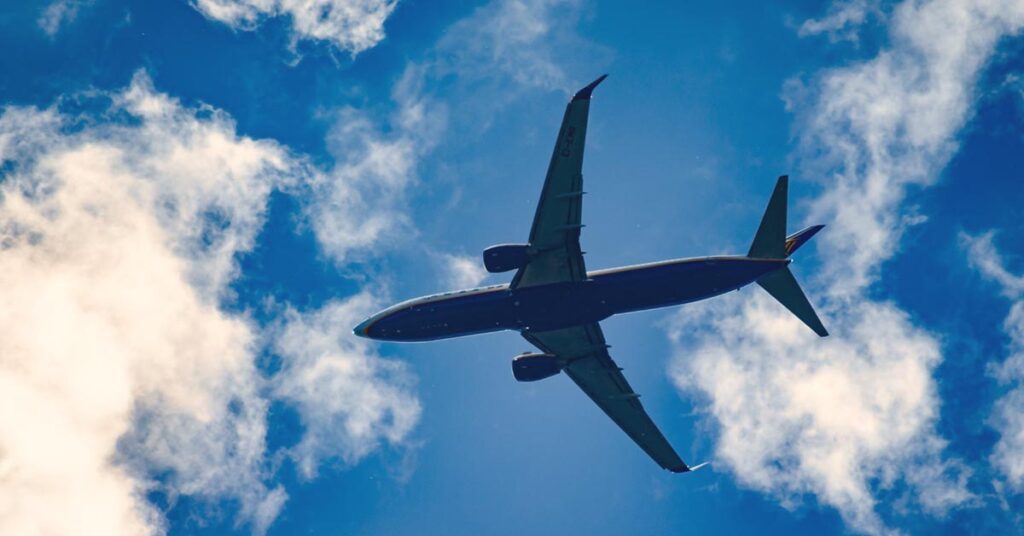
How do you get to Transylvania?
Transylvania is located in the center of the country, which makes it very easy to access once you arrive in Romania. When it comes to transportation, you can get there by plane, train, bus, or car. And we will tell you all about it.
Get there by AIR
Otopeni International Airport: All the major airlines fly to and from Bucharest – the capital of Romania. Avram Iancu International Airport Cluj-Napoca: Airlines such as Lufthansa, Turkish Airlines, or AirFrance fly here. Sibiu International Airport and the newly opened Brasov Airport : Right in the heart of Transylvania. The airlines for this airport are WizzAir, Lufthansa, Blue Air, and Tarom. Transilvania International Airport of Targu-Mures : Airlines that fly to and from here: WizzAir UK, WizzAir, Tarom.
Get there by TRAIN or BUS .
Find below a list of the largest rail stations in Transylvania. It is good to know that there are many bus stops near these stations as well.
- Bucharest North Railway Station
- Timișoara North Railway Station
- Oradea Railway Station
- Sibiu Railway Station
- Brașov Railway Station
Good to know: trains can be pretty slow, so remember to bring your favorite book!
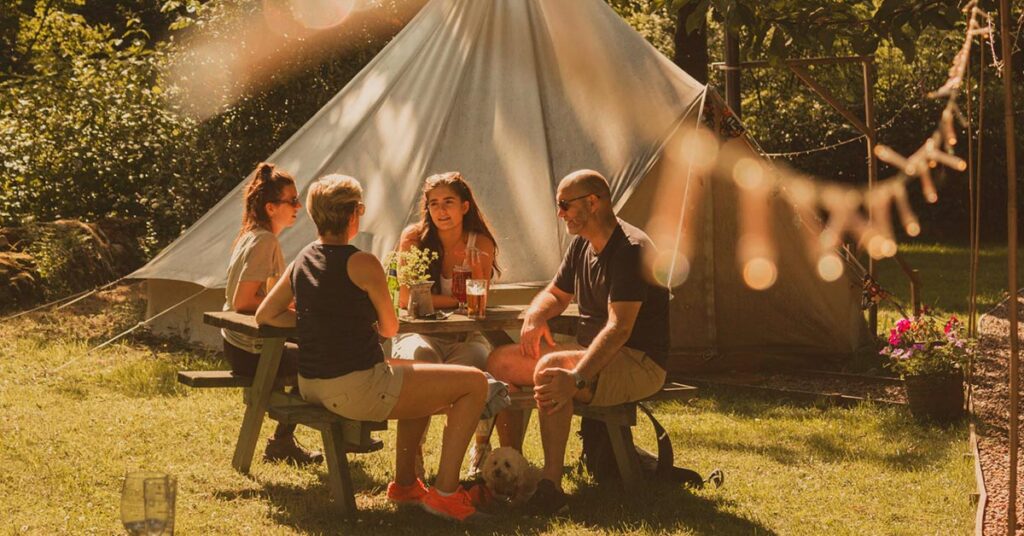
Unique stays in Transylvania
Accommodation is essential to the success of a good vacation. Taking that into consideration, here are some hidden gems of Transylvanian hospitality:
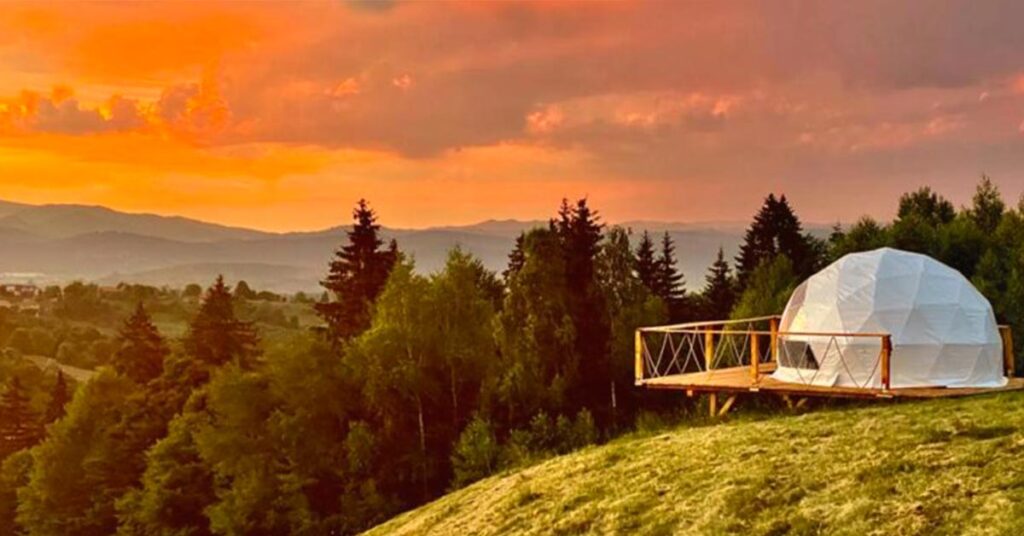
( photo credits @ Booking.com) If you are into glamping and watching sunsets, you will be amazed by this getaway called Nomad Eco Village ! This village is where technology met nature and built a sustainable out-of-this-world location. You will love it here!
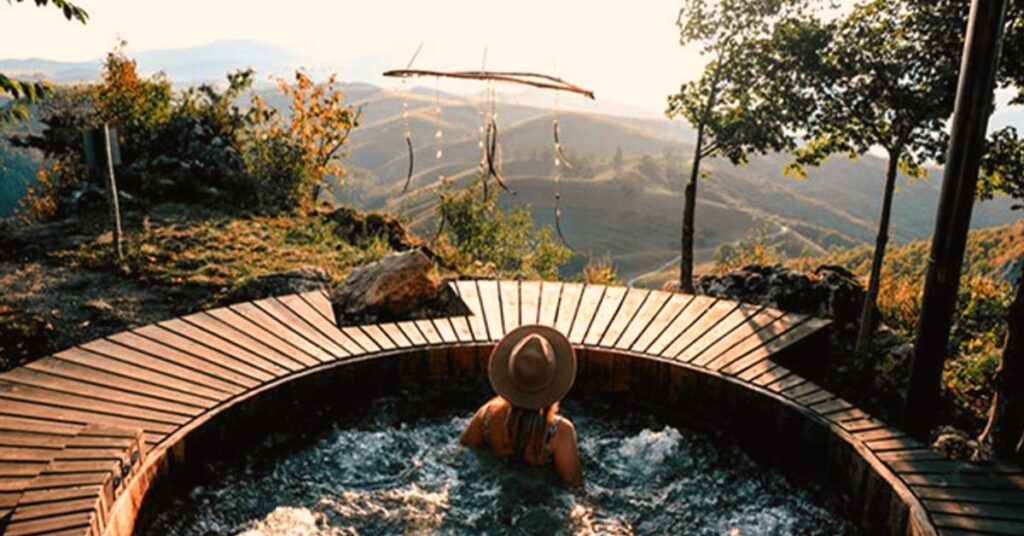
( photo credits @ BusinessMagazine) Another accommodation that will show you the beauty of Romanian landscapes while transporting you into the old times of Transylvania is The Raven’s Nest. This one is a mountain retreat where you can enjoy the outdoors to the max while sleeping in restored village houses dating to the 19th century. Just imagine a campfire here with the locals!

( photo credits @ Booking.com) We even have one dedicated to fantasy lovers, and by far the best choice if you are looking for something you have never seen before! Dealu Verde is the place for you to catch a glimpse of what hobbit life looks like! Sounds fun? Wait until you see the thematic rooms and the dreamy sunrises from your hot tub. Pretty much perfect!
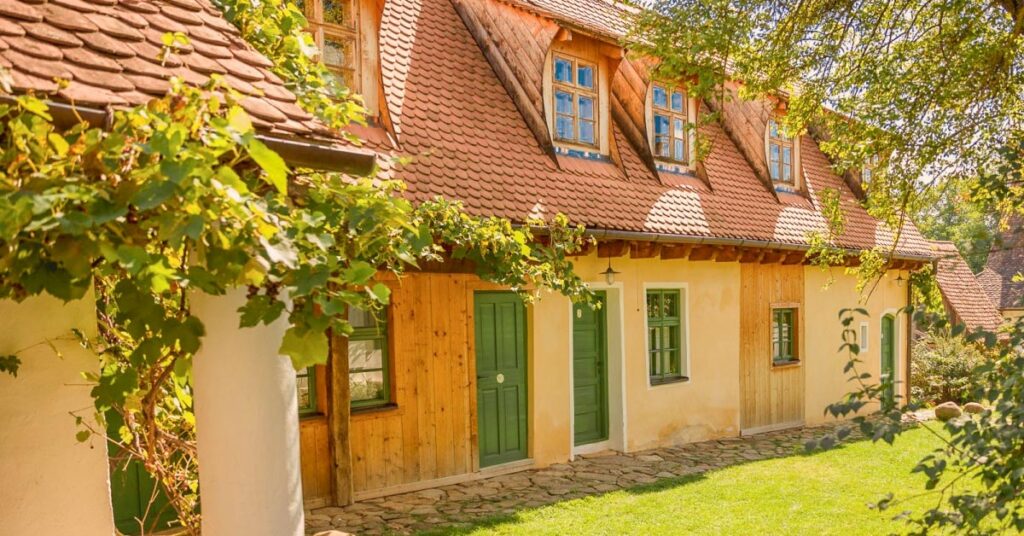
Our last recommendation has to be the restored old homes of the Viscri Village! One of our favorites is the lovely Viscri 125 B&B , located in Brașov county, and can be the best choice for travelers that enjoy the rural scenery. This village offers lots of history, cozy homes, and friendly locals! It is as if you enter a fairytale land in Viscri village. The colorful houses, the cobblestone road, the big trees, and the fortified church will show you a different face of Romania compared to the big cities.
What to do in Transylvania?
- Explore the towns
Before packing your bag and booking a tour to Romania , it will be good first to establish WHERE your home base will be and what cities are calling your name! To help you a bit with that, we created this short list of the best cities in Transylvania and what they have to offer:
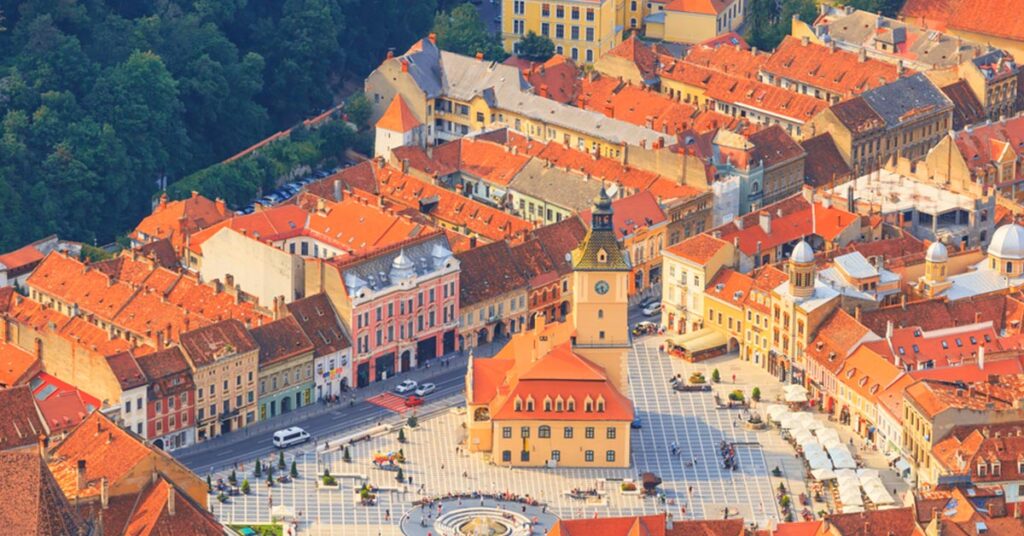
Brașov Probably the best mountain city. You cannot go wrong with making this city your base! People love it during the winter season for its skiing resorts, but year-round, you will find this city very lively, filled with coffee shops, traditional restaurants, and street music.
There is a lot to do here, such as exploring the history and ancient architecture, hiking up to the “Brasov” sign on top of the Tampa mountain for the view, or simply enjoying the nightlife in the old town. Also, near Brașov, there is a lot more to see and visit! For example, near Brașov, you’ll find Bran village and Dracula’s Castle . It is a 30 min trip by car or bus, so do not forget to take a day trip to explore that!
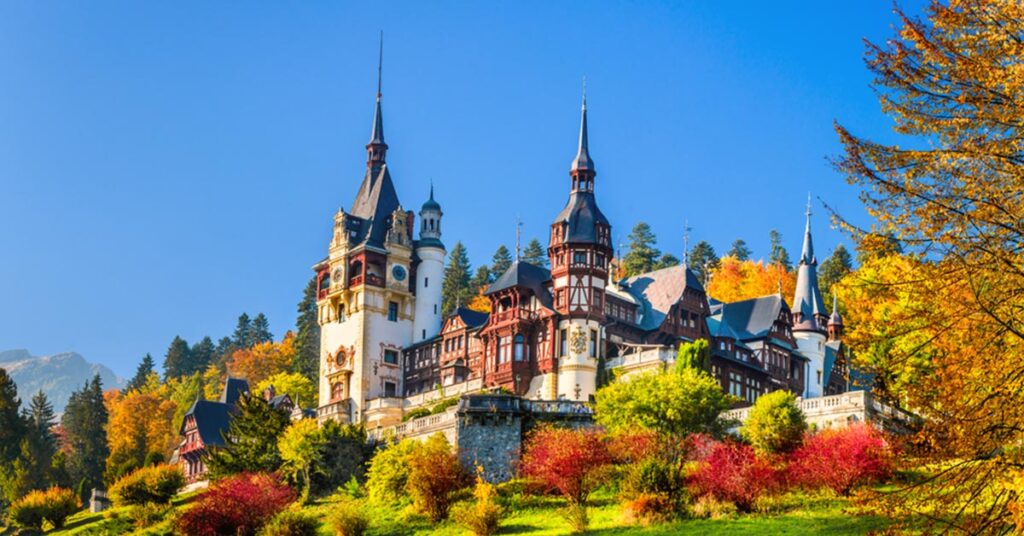
Another fantastic place near Brașov is Sinaia! Only 40 km away from Brașov and easy to reach by train or car, this mountain town is one of the most famous in Romania, simply for its natural beauties, the old monasteries, and the Peleș Castle! This fairytale-like castle used to be King Carol’s summer residence. You could say it is truly an architectural artwork combining elegance with the coziness of a family home.

Cluj-Napoca Currently the largest city of Transylvania, Cluj is a cultural, university, economic, and industrial center. More than a third of its population comprises students from the country and Europe. Besides the historical attractions and nightlife, the city welcomes its visitors with a famous botanical garden and international festivals, the best-known being the Untold Festival!
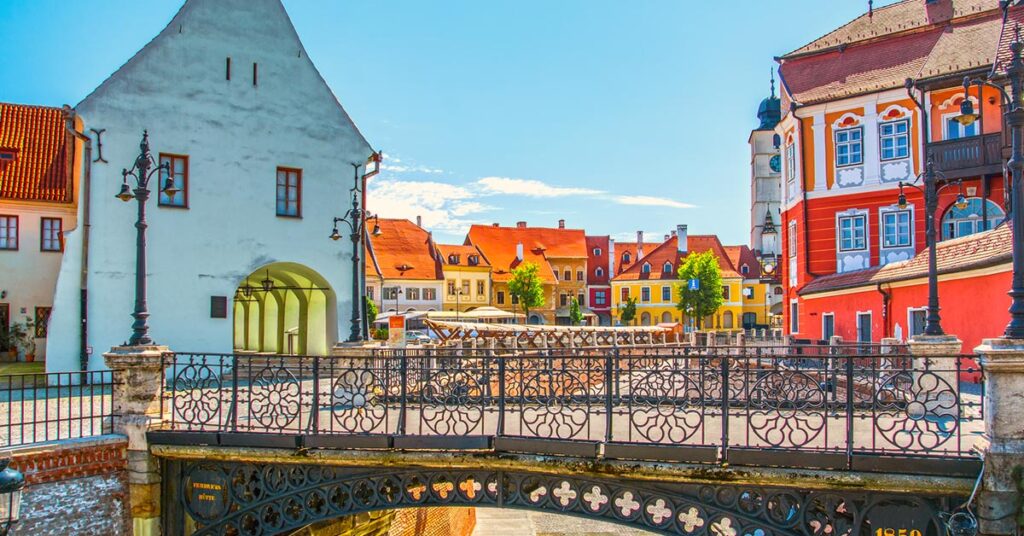
Sibiu Former European Capital of Culture, the city of Sibiu has the most remarkable medieval heritage: towers, bastions, fortification belts, old buildings, and narrow streets, all of which give it a unique charm. Tourists love this place for its nearby hiking trails and the old town’s Great Square.
Many events happen here in the open air, and you’ll also find brunch restaurants, fancy boutiques, and street vendors. Sibiu is considered by many not only the most beautiful in Transylvania but also in Romania. Sibiu can make a great home base for you, as there are many other beautiful places to see nearby.
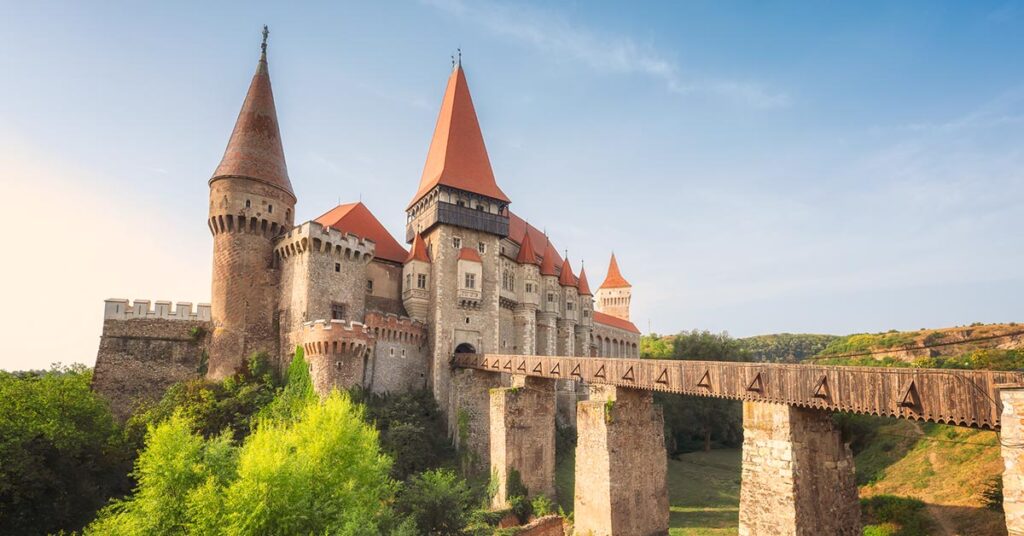
Another thing people love about Romania is the castles! With a 2h journey from Sibiu, you can reach Corvin Castle! This is a Gothic-style building with towers and bastions, where an annual medieval festival with medieval ladies, knights, and dances takes place. Worth seeing in real life!
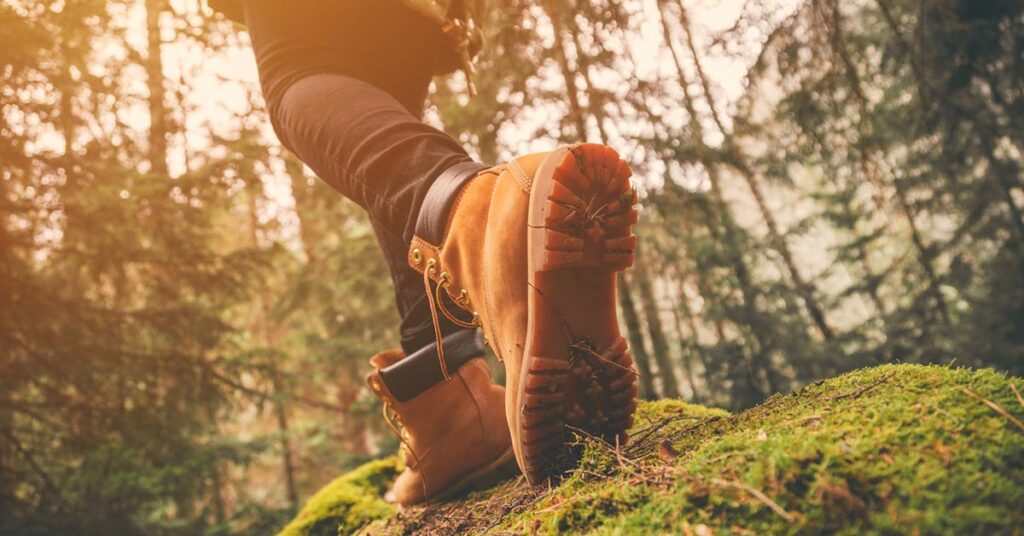
- Hike in Transylvania
Hiking in Romania is very enjoyable! It is not only good for the body but also the spirit! The Carpathians have lots to offer when it comes to hiking: you can easily find a route suitable for your skills and stamina. From gorgeous easy walks through the forest to difficult abrupt paths and huge caves, hiking is tons of fun, but always remember to be well prepared: have your hiking essentials, join a group with a mountain guide, and remember that this is the country with the largest population of wild bears! Find a good option for your hikes right here.
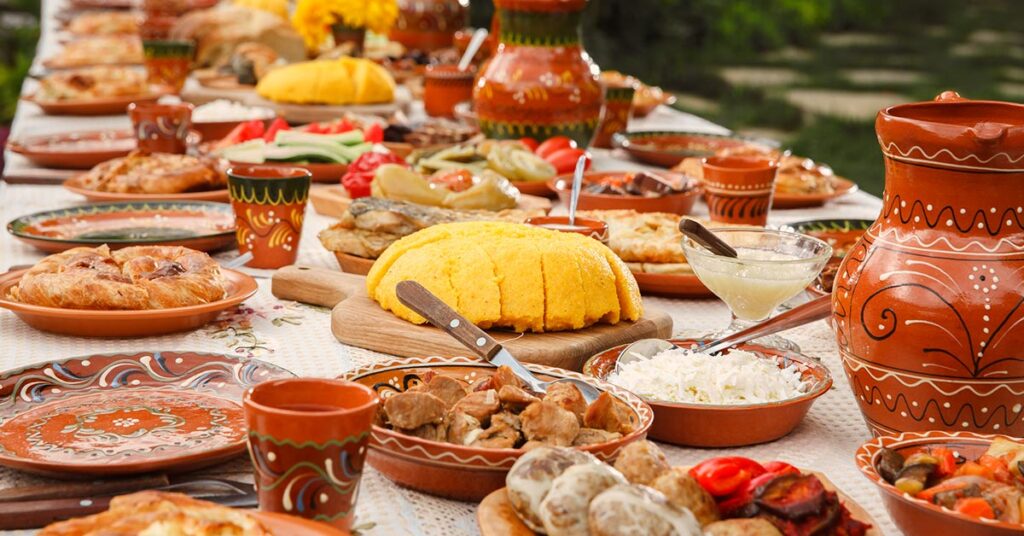
- Eating and drinking in Transylvania
The food culture of Romania is well-known across the globe for being delicious and memorable! Have the courage to try traditional dishes and homemade food, even if some may not align with your personal tastes. We are sure you will fall in love with Romanian cuisine and everything it has to offer.
Some of the dishes we recommend trying in Transylvania are: SARMALE – Pickled cabbage rolls stuffed with meat and rice. Eat this with a bit of warm polenta and sour cream. BEAN SOUP WITH SMOKED PORK – a delicious soup, usually served in a bowl-like carved piece of local bread. Simply a unique Transylvanian experience! BULZ – this one is polenta with local cheese, sour cream, and fried bacon. It is common to have it without bacon, so if you are a vegetarian, ask for that option. Simple and savory! GOULASH (soup or stew) – This dish comes from the Hungarian influences in Transylvanian cuisine and is a very meaty dish with a red tomato sauce, a lot of paprika, and vegetables and usually cooked in a rustic cauldron.

PAPANAȘI – In most parts of Romania, this dessert is a fried dough served with sour cream and jam. In Transylvania, you might have the luck of tasting the regional version, made entirely from local sweet cheese and served with homemade jam. ALIVENCI – A dessert well-known since communist times, this dish is mainly pimped sweet polenta with milk, sour cream, raisins, and vanilla. Sounds interesting? It is truly delish! Let us not forget about the drinking! You might have already heard some rumors about the alcohol-related culture in Romania. Yes, we do have one, and this is due to the richness of our vineyards and fruits! Locals in Transylvania enjoy their homemade PĂLINCĂ – which contains double-distilled plum (or apple and pears) and is similar to brandy. Whether you like a strong drink every now and then or not, you should not miss the opportunity of trying a shot of pălincă before your meal.
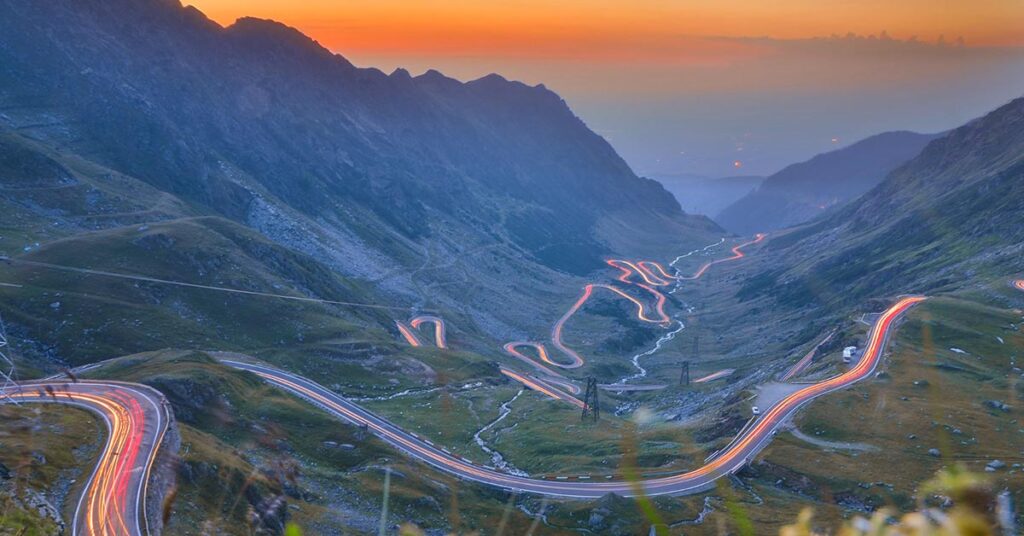
Discover hidden gems of the lands
There are a lot of nature gems among the hills and mountains of Transylvania, and many of them are very popular in Europe and even the world. Discover some of them here: TRANSFĂGĂRĂȘAN HIGHWAY – Romania’s most famous road, it has a zigzaggy shape, and its beauty, while going through the mountains, is simply indescribable. No wonder the Top Gear Team called it “the best road in the world.” Transfăgărășan reaches an altitude of 2042 meters (over 6000 ft) and remains, until today, one of the must-see places in Romania. A favorite holiday activity in Transylvania.
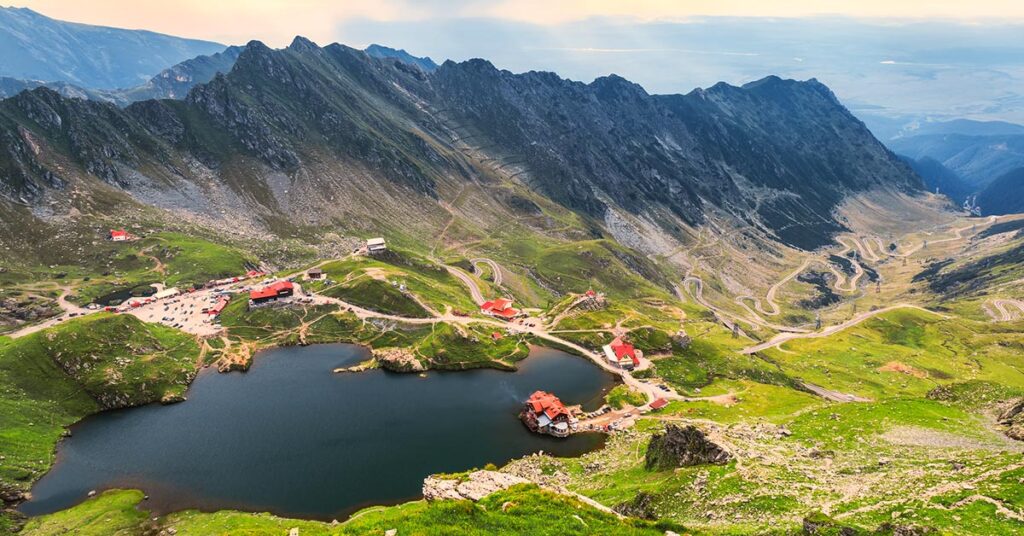
BÂLEA LAKE – At the highest point of the Transfăgărășan highway, you will find this uncommon glacier lake. Its water is the resource for creating the only Ice Hotel in Romania . Every year, the hotel is booked before it starts to snow, so be sure to reserve your room in time if this experience is on your list! During winter, the road is closed because of the heavy snow, and the only way to access this hotel is by cable car. Isn’t it wonderful? On the same road to this lake, you can also find attractions like Vidraru Lake, Capra Lake, and Bâlea Waterfall – great places for photos!
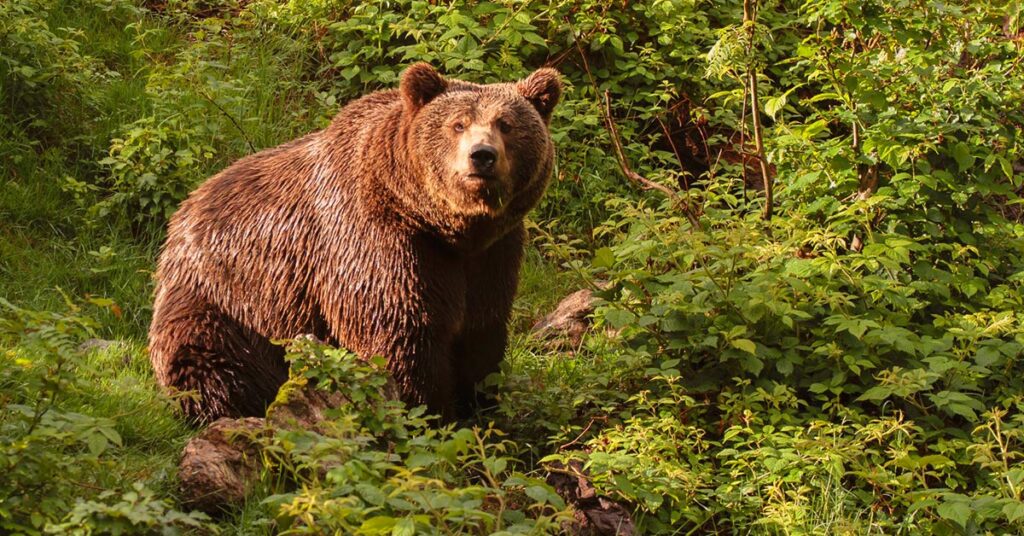
LIBERTY BEAR SANCTUARY – This organization is constantly re-homing, rehabilitating, and giving captive bears a chance to live the rest of their days in a more natural environment. You will find the Sanctuary in the city of Zărnești (just outside Brașov), where you will learn about their heart-breaking stories while being delighted by the presence of these magnificent forest creatures. A visit to the Bear Sanctuary is one of the add-ons you can use to enhance your tour in Transylvania.

Good to know if you’re considering a Transylvania tour!
Cheaper than Western Europe We all know that traveling requires a very well-planned budget, so it might help to know that Transylvania is relatively cheap to explore. You can find accommodation for as little as 30-35 euros per night if you go for cheaper B&Bs, and meals can be as little as 15 euros per person. Of course, just like any other place on earth, the sky is the limit when it comes to costs. Still, relatively inexpensive travel is definitely a possibility in Transylvania.

WI-FI is crazy fast If you are a digital nomad or simply traveling and need to work remotely with good Wi-Fi, know that Transylvania’s internet is top-tier. The Wi-Fi is strong, fast, and free in most locations, you only need to ask the personnel for the password, and you will be checking your emails in no time!
Vegetarians might struggle If you are a vegetarian/vegan or on a strict diet, you might have some difficulties regarding restaurant menus since most dishes in Transylvania are meaty. There are options, just maybe fewer than what you are used to! Do your research well! In the meantime, here is a short selection of places with variety.
While it is your choice how you wish to visit Transylvania, we recommend having a local tour guide with you. You’ll find out the local stories of each place, its history, and many times some cool details you won’t find so easily by only searching online. And, if you prefer to have everything organized for you, then booking through a local agency is the best way to travel. You won’t have to do much planning or spend hours doing research. Everything will be set up for you, from transportation to the itinerary, accommodation, and food.
3 reasons to book a tour with BalkanTrails
- We only do private tours ! We tailor the tour so that it best suits your needs. You and your companions will be the only travelers on the tour. Customizations to a tour include pacing changes, included sights, a different selection of hotels, and more.
- We’re locals, so we can show you Transylvania better than any vlogger on Youtube. We also have over 20 years of experience in leading and creating incredible journeys, and we can share amazing insights during your visits.
- We create unforgettable experiences with the best possible value and lots of flexibility!
Some of the tours that include the Transylvanian experiences are:
- Romania revealed (where among others, you can learn about the ancient crafts of egg painting and black pottery or even visit the home of a Gypsy family)
- Citadels of Transylvania (we discover all important castles and see famous paintings in UNESCO Monasteries)
- Dracula Tour (this one is all about the legend, we will uncover the history behind Bram Stoker’s Dracula and even visit his grave)
We also have numerous add-ons to these tours (like rafting, bear sanctuary visits)! You can check them out on our website. They include lots of activities mentioned in this extensive guide. Isn’t it nice not having to plan everything on your own?! Saving both time & money! Explore Transylvania with us!
ABOUT BALKAN TRAILS
Subscribe to our newsletter.
You May Also Like

Bulgaria Travel Guide – the most memorable landmarks and must-see destinations

Unique travel experiences – 5 of the most interesting attractions in Romania’s Mountains

Top 5 easiest Bulgarian cooking recipes

Complete travel guide of visiting Plovdiv

Unique travel experiences – The Danube Delta, Europe’s largest and best-preserved delta


Travel guide Romania – the most memorable landmarks and must-see destinations
- Share This Post:
Add a Comment Cancel reply
Save my name, email, and website in this browser for the next time I comment.

Inquiry Form
Tour inquiry form.

- Description
$0.00 ( 0 Items)

The Tourist's Guide to Transylvania
Price: $65.00
Quantity: 1 available
Condition: Very Good
A clean, unmarked book with a tight binding. 9 3/8"w x 12 3/4"h. 80 pages. Many full page color illustrations. "Count Ignatius de Ludes is a sorcerer of considerable standing with many years' experience in providing occult protection for visitors to Transylvania. In the Tourist's Guide to Transylvania he provides an illuminating introduction to this extraordinary land and the fascinating diversity of its supernatural denizens. ... In addition to suggesting where to go and what to look for, he offers essential advice on dealing with demonic possession, preparing for a journey into the unknown and travelling on the Astral Plane. ..." [publisher]
Title: The Tourist's Guide to Transylvania
ISBN Number: 0706416023
ISBN-13: 9780706416022
Location Published: London, Octopus Books: 1981
Binding: Oversize Hardback
Book Condition: Very Good
Jacket Condition: No Jacket
Categories: Art , Science Fiction/ Fantasy , Metaphysics/Occult
Seller ID: 155285
Keywords: accommodation , dark legions , hints and tips , inhabitants , magic , masters of darkness , phenomena , sorcery , travel

This website uses cookies
This website uses cookies either for the usage of analytics software, marketing software, and/or to supply social media features. Read more here .

- Travel & Holiday
- Specialty Travel

Download the free Kindle app and start reading Kindle books instantly on your smartphone, tablet or computer – no Kindle device required .
Read instantly on your browser with Kindle for Web.
Using your mobile phone camera - scan the code below and download the Kindle app.

Image Unavailable

- To view this video download Flash Player
Follow the author

Transylvania (Bradt Travel Guides) (Bradt Travel Guides (Regional Guides)) Paperback – 15 Dec. 2012
There is a newer edition of this item:.

- Print length 304 pages
- Language English
- Publisher Bradt Travel Guides
- Publication date 15 Dec. 2012
- ISBN-10 9781841624198
- ISBN-13 978-1841624198
- See all details
Customers who viewed this item also viewed

Product description
About the author, product details.
- ASIN : 1841624195
- Publisher : Bradt Travel Guides; 2nd edition (15 Dec. 2012)
- Language : English
- Paperback : 304 pages
- ISBN-10 : 9781841624198
- ISBN-13 : 978-1841624198
- 26,979 in Specialty Travel
- 164,263 in Home & Garden (Books)
About the author
Lucy mallows.
Discover more of the author’s books, see similar authors, read author blogs and more
Customer reviews
Customer Reviews, including Product Star Ratings, help customers to learn more about the product and decide whether it is the right product for them.
To calculate the overall star rating and percentage breakdown by star, we don’t use a simple average. Instead, our system considers things like how recent a review is and if the reviewer bought the item on Amazon. It also analyses reviews to verify trustworthiness.
- Sort reviews by Top reviews Most recent Top reviews
Top reviews from United Kingdom
There was a problem filtering reviews right now. please try again later..
Top reviews from other countries
- UK Modern Slavery Statement
- Sustainability
- Amazon Science
- Sell on Amazon
- Sell on Amazon Business
- Sell on Amazon Handmade
- Sell on Amazon Launchpad
- Supply to Amazon
- Protect and build your brand
- Associates Programme
- Fulfilment by Amazon
- Seller Fulfilled Prime
- Advertise Your Products
- Independently Publish with Us
- Host an Amazon Hub
- › See More Make Money with Us
- Instalments by Barclays
- Amazon Platinum Mastercard
- Amazon Classic Mastercard
- Amazon Currency Converter
- Payment Methods Help
- Shop with Points
- Top Up Your Account
- Top Up Your Account in Store
- COVID-19 and Amazon
- Track Packages or View Orders
- Delivery Rates & Policies
- Amazon Prime
- Returns & Replacements
- Manage Your Content and Devices
- Recalls and Product Safety Alerts
- Amazon Mobile App
- Customer Service
- Accessibility
- Conditions of Use & Sale
- Privacy Notice
- Cookies Notice
- Interest-Based Ads Notice
Southwest Airlines Community
- What to Watch on Your Southwest Flight: June 2024

- Subscribe to RSS Feed
- Mark as New
- Mark as Read
- Printer Friendly Page
- Report Inappropriate Content

- Back to Blog Home
- Previous Blog
You must be a registered user to add a comment. If you've already registered, sign in. Otherwise, register and sign in.
Popular Blog Posts
Southwest airlines family travel hub: your guide to flying with kids and infants, saying goodbye to our 'queen of hearts', the 2023 one report and diversity, equity, & inclusion report is live check it out now, wanna get away to aulani southwest is offering you a chance to win, hi 5 with a companion: act fast on this limited-time promotional companion pass offer, quick links, community champions.
Customer Service | FAQ
Save big on travel each week. Sign up
Connect with us
Discussion Forum and Stories
About Southwest
- Investor Relations
- Southwest Citizenship
- Southwest ® The Magazine
- Advertise with Southwest
- Supplier Information
Flying Southwest
- Why Fly Southwest?
- International Travel
- Airport Information
- Popular Routes
- Tarmac Delay Plan
- Contract of Carriage
- Flight Schedules
Southwest Products
- EarlyBird Check-in ®
- Business Select ®
- Southwest ® gift card
- Southwest Vacations
- WiFi & Inflight Entertainment
- Corporate Travel & Groups
- Charter Services
- Southwest ® The Store
Customer Service
- Customer Commitments
- Baggage Policies
- Special Assistance
- Customers of Size
- Traveling with Infants
- Traveling with Pets
- Purchasing & Refunds
- Lost and Found
Indicates external site which may or may not meet accessibility guidelines.
© 2019 Southwest Airlines Co. All Rights Reserved. Use of the Southwest websites and our Company Information constitutes acceptance of our Terms and Conditions . Privacy Policy
All prices displayed on this web page are in dollars of the United States of America.
- Southwest Airlines Business Travel logo and link Southwest Corporate Travel
- Southwest Airlines Cargo logo logo and link Southwest Cargo

9 New Books Savvy Travelers Should Put on Their Summer Reading List
Picturesque portugal, historic expeditions, korean recipes, and ocean exploration are among our choices for the best new books for travelers this season..
- Copy Link copied

There’s something here for you, whether you’re in the mood for historical fiction, a memoir, or biography this summer.
Courtesy of the publishers
For some travelers, a summer “beach read” is the print equivalent of junk food. Others aim higher: Lin-Manuel Miranda first encountered the story of Alexander Hamilton while vacationing in Mexico, reading the 800+ pages of Ron Chernow’s biography. The following selection of nine new recommended reads released in 2024 are diverse but share one quality: All are rooted in place, whether it’s rural Sicily, South Africa, Paris, or New York City. Let them inspire your next trip.

Patterns of Portugal by Christine Chitnis (Clarkson Potter Publishers, 2024)
Courtesy of Clarkson Potter Publishers
Patterns of Portugal by Christine Chitnis
- Location: Portugal
- Type: Photography book
- Buy now: bookshop.org
It’s said you can’t judge a book by its cover. But the front of Patterns of Portugal perfectly summarizes the contents and subtitle: A Journey Through Colors, History, Tiles, and Architecture. It depicts part of the blue-and-white tiled exterior of the rococo 18th-century Catholic Igreja do Carmo in Porto. A more conventional photo would show the ornate front. But Chitnis focuses on a side wall.
The book’s 200+ photographs are divided among five chapters based on such colors as terra-cotta and verde. This is a scrubbed-up Portugal: no trash on the streets, no tourist hordes, no gray skies. The photos are the stars, with informative captions. The limited text includes one-page overviews of azulejos, cuisine, textile arts, and several other topics.

Footnotes From the Most Fascinating Museums by Bob Eckstein (Princeton Architectural Press, 2024)
Courtesy of Princeton Architectural Press
Footnotes From the Most Fascinating Museums by Bob Eckstein
- Location: North America
- Type: Art book
This delightful compendium covers 70+ museums in North America, nearly all in the United States. Besides the usual suspects (Met in NYC, Art Institute of Chicago) are some quirky selections (Graceland as a “Historic Home,” SPAM Museum) and others that may be new to you (Peabody Essex Museum, Greenfield Village, American Writers Museum). Most include an intriguing quote about the museum by staff or visitors. Yes, it’s highly subjective, as the author/illustrator explains in his introduction, but from the funny foreword on, it’s an entertaining guide. It will increase your must-see list.

Paradise of the Damned by Keith Thomson (Little Brown and Company, 2024)
Courtesy of Little Brown and Company
Paradise of the Damned by Keith Thomson
- Location: South America and London, England
- Type: Biography/History
The subtitle is The True Story of an Obsessive Quest for El Dorado, the Legendary City of Gold , but it could be “People Will Do Anything for Gold.” This absorbing account focuses on several attempts by Sir Walter Raleigh to locate a hidden city of gold in uncharted Guyana. What doesn’t go wrong? While trying to beat Spanish rivals to the elusive prize, he’s also dealing with royal politics back in London with Queen Elizabeth and King James. His first voyage and expedition to South America occur in 1595; he’s still searching in 1618. Spoiler alert: Things don’t end well.

The Sicilian Inheritance by Jo Piazza (Dutton, 2024)
Courtesy of Dutton
The Sicilian Inheritance by Jo Piazza
- Location: Sicily, Italy
- Type: Historical mystery
In alternating chapters, Jo Piazza weaves a story of Serafina, native of Sicily, and Sara, her American-born great granddaughter, who travels to the island for answers to questions about her family and land she may have inherited. Both are wives, mothers, and workers, but their stories occur a century apart. Most of the novel takes place in Caltabellessa, a fictional hill village. It’s a family saga with romance, history, crime, mystery—and maybe one too many plot twists and coincidences. But you’ll be rooting for these two smart, determined women as they struggle against a society undermining their ambitions.

Amphibious Soul by Craig Foster (HarperOne, 2024)
Courtesy of HarperOne
Amphibious Soul by Craig Foster
- Location: Atlantic Ocean and South Africa
- Type: Memoir
Craig Foster is best-known for his Academy Award–winning documentary My Octopus Teacher . His decades as a filmmaker in southern Africa inform this memoir about his search to connect with wilderness. Daily cold ocean dives and learning the skills of tracking animals are among the ways he finds rejuvenation in nature. Conservation and support for biodiversity are key concerns. Besides photos of sea life, the book has a QR code linking to 27 short videos from Foster’s work over the past 25 years. Vivid minutes of jellyfish, crocodiles, octopuses, and other animals are a wonderful bonus.

Koreaworld: A Cookbook by Deuki Hong and Matt Rodbard (Clarkson Potter Publishers, 2024)
Koreaworld: A Cookbook by Deuki Hong and Matt Rodbard
- Location: Korea and its diaspora
- Type: Cookbook
Chef Deuki Hong and journalist Matt Rodbard (founding editor of Taste , a James Beard Award–winning food magazine) team up again. (Their best-selling Koreatown looked at U.S. Korean American communities.) This time they range from Seoul to NYC with recipes that pay tribute to barbecue (smoked ribs cooked over hay), seafood and plant-based dishes, and modern takes on classics. With recipes that include ingredients like 7Up and preparations like Radish Kimchi Granita, this collection has a sense of fun. There’s even Taco Bell Bibimbap and street food inspired by K-pop. In addition to some 75 recipes, Koreaworld looks at Korean food’s expansion and evolution worldwide and includes conversations with leading chefs.

Bird Milk & Mosquito Bones by Priyanka Mattoo (Knopf Publishing Group, 2024)
Courtesy of Knopf Publishing Group
Bird Milk & Mosquito Bones by Priyanka Mattoo
- Location: Around the world
- Preorder now (out June 18): bookshop.org
Some two dozen short essays of immigrant/nomad life for one family from India make up this memoir. They range in setting from Saudi Arabia to England, Italy, Los Angeles, and other places Mattoo called “home” for a time. In 40 years, she had 32 addresses. The essays, not in chronological order, lend themselves to dipping here and there, depending on what titles intrigue you: “Astrocartography,” “American Sigh,” “A Remarkably Self-Assured Debut.” Throughout, Mattoo is a wise, observant guide who has kept her sense of humor intact despite various challenges in her peripatetic life.

The Paris Novel by Ruth Reichl (Random House, 2024)
Courtesy of Random House
The Paris Novel by Ruth Reichl
- Location: Paris, France
- Type: Historical fiction
This is less a novel than a fairy-tale, but fans of French cuisine and art, Paris, and/or Ruth Reichl won’t mind the coincidences and other implausibilities as a poor orphan drudge transforms into a princess. The once upon a time setting is the 1980s. During her first trip to Paris, Stella St. Vincent from New York City encounters people who wear couture clothes and drink fine vintages with their gourmet cuisine. They know lots about art and literature. The key unlocking this world for Stella is a vintage Dior dress with almost magical properties. It’s an ideal escape when a tiny bag of pretzels is a highlight of your long-delayed flight.

How to Find Old New York (Herb Lester Associates, 2024)
Courtesy of Herb Lester Associates
How to Find Old New York by Herb Lester Associates
- Location: New York City
- Type: Guidebook
- Preorder now (out July 10): herblester.com
Herb Lester, the London-based publisher, produces unique maps for various European and U.S. cities. Its clever NYC guidebook—an updated version out June 20—is printed on card stock and has a map and hand-drawn illustrations. Here, “Old New York” often means south of Central Park. The focus is on food and drink at places where no one “curated” the menu: B&H Kosher Dairy Restaurant, Dublin House, Donohue’s Steak House, Arturo’s Coal Oven Pizza, plus better-known spots like the oyster bar at Grand Central and Sardi’s—all with suggestions of what to note and/or order. The Strand and Argosy bookstores and Casa Magazines are included, too.
Book lovers will enjoy other Herb Lester guides with literary themes, such as The Raymond Chandler Map of Los Angeles , The World of Patricia Highsmith , and Douglas Adams’ London .

A first timer’s guide to Prince Edward Island
May 25, 2024 • 8 min read

Experience a colorful slice of island life on your first visit to Prince Edward Island © Peter Unger / Getty Images
Long sandy beaches backed with red cliffs. Freshly caught lobster, oysters and clams. Toe-tapping music at lively kitchen parties or local pubs. And plenty of outdoor adventures, from cycling to kayaking to hiking. In the Gulf of St Lawrence, on Canada’s eastern shores, Prince Edward Island (PEI) may be the country’s smallest province, but there’s plenty to see and do.
Besides its natural setting, PEI’s other claim to fame is a series of early 20th-century novels about a feisty red-haired girl. Lucy Maud Montgomery set the Anne of Green Gables books around her PEI hometown of Cavendish, and several island attractions can tell you more about the noted author and the beloved Canadian character she created.
You can visit Prince Edward Island as part of an Atlantic Canada road trip – the nearly 13km-long (8-mile) Confederation Bridge connects PEI to the mainland – or come for a peaceful beach escape. Bring your bathing suit and your appetite too. PEI’s nickname is “Canada’s food island.”
Here's all you need to know to plan your first trip to Prince Edward Island.

When should I go to Prince Edward Island?
PEI shines under the summer sun, its short peak season running from late June into September. The weather is typically warm, with temperatures hovering around 20–25ºC (70–80ºF), prime time for beach-going, hiking and picnicking. With cooler mornings and evenings, the weather stays temperate into October, as the leaves take on their autumn reds and golds. Fall brings food fests too, including the Fall Flavours Festival and the PEI International Shellfish Festival .
Many island businesses are seasonal, opening in May or June and closing in September or by the Canadian Thanksgiving weekend in October. Prices are typically somewhat lower in the shoulder months of May, June, September and October. Expect more rain and varied temperatures in both fall and spring, although you might have mild, sunny days too, which are good for hiking, bicycling and island exploring.
The Atlantic hurricane season officially runs from June to November, although the worst storms have previously hit the maritime provinces in the fall. Expect snow anytime between November and April, with fierce winter winds making the temperatures feel much colder than the average ranges of -11ºC to -3ºC (11–26ºF).
Planning a longer trip? These are the best times to visit Canada
How much time should I spend on Prince Edward Island?
If you have a long weekend, start in Charlottetown , exploring the province’s historic capital, and learn about its role as the “the birthplace of Confederation,” creating the union that would become the country of Canada. Have a drink overlooking the waterfront, then grab a bite from one of the vendors in Founders Food Hall . Your next stop is Cavendish on the island’s north shore, where several sights tell you about the Anne of Green Gables story. Then explore the beaches of Prince Edward Island National Park , perhaps taking a hike through the Greenwich dunes before dinner at Dalvay by the Sea , a historic summer home turned inn. The next day, go kayaking or cycling. Dig into a traditional lobster supper, ending your trip with music in a local pub.
To explore more of the island, plan a one-week road trip. After your time in Charlottetown, Cavendish and the national park, drive west for an Indigenous cultural experience on Lennox Island , a Mi’kmaq community. Circle the island’s west side, sampling the spuds at the Canadian Potato Museum , stopping for a lunchtime concert at the Stompin’ Tom Centre and spending the night in the West Point Lighthouse . Returning to Charlottetown, stop off in the village of Victoria by the Sea for a lobster roll or freshly steamed mussels. If you have more time, continue east to Souris for a cruise on a lobster boat.

How do I get to Prince Edward Island?
You can fly non-stop to Charlottetown Airport (YYG) from Toronto, Montreal and Ottawa year round, and seasonally from Calgary and smaller Canadian cities. For more flight options, consider jetting into Nova Scotia’s Halifax Stanfield International Airport (YHZ), which has non-stop flights to additional Canadian, US and European cities. It’s a three-hour drive or bus trip from Halifax airport to PEI over the Confederation Bridge. Maritime Bus can take you to Charlottetown from Halifax airport or from other destinations in Nova Scotia and neighboring New Brunswick.
Although PEI has no train service, Canada’s national rail carrier, Via Rail , can bring you from Montreal or Quebec City to Halifax or to Moncton, New Brunswick. From there, take the bus or rent a car to continue to the island.
How do I get around Prince Edward Island?
In compact, walkable Charlottetown, most attractions are along the waterfront or in the historic center. T3 Transit , the island’s public transit service, runs buses to Charlottetown Airport and around the city. T3 Transit’s rural routes provide limited service between Charlottetown and other island destinations. While services are infrequent, the fares are fantastic value – only C$2 to travel anywhere on the island – if you can align your travels with the bus schedule.
PEI is relatively flat, making it a good destination for cyclists. Following the route of a decommissioned rail line, the Confederation Trail runs 273km (170 miles) through the island center, and you can also cycle the Island Walk, which takes you primarily on less-busy roads.

Top things to do on Prince Edward Island
Go to the beach.
PEI has dozens of them. Some of the best stretches of sand are along the north shore in Prince Edward Island National Park, but there are sandy beaches around the island.
Dive into a novel
Learn the story of Anne of Green Gables , one of Canada’s most beloved fictional characters, and her creator Lucy Maud Montgomery at sights like Green Gables Heritage Place or Anne of Green Gables Museum .
Catch your dinner with a fiddling fisherman
JJ Chaisson is a lobster fisher and musician. Along with his wife Julie, he runs The Fiddling Fisherman , taking guests out on their family fishing boat for a lobster dinner, accompanied by music from Chaisson’s fiddle.
Learn about Indigenous culture
Take a food, music or art workshop in the First Nations community of Lennox Island. You might learn to bake bannock – a biscuit-like bread – over an open fire, get an introduction to traditional quill work, or craft your own moose-hide drum.
Clap along at a ceilidh
Drawing on Irish, Scottish and maritime traditions, a ceilidh (pronounced KAY-lee) is part concert and part kitchen party, blending lively fiddle music, singing, dancing and storytelling. These musical events take place in pubs, community halls and concert venues across Prince Edward Island.
Read more: 12 exciting experiences in every corner of Canada

My favorite thing to do on Prince Edward Island
My favorite thing to do on PEI is walk, following sections of the Island Walk , a 700km (435-mile) route around the entire isle. Modeled after Spain’s Camino de Santiago (though without a pilgrimage history), the Island Walk has 32 sections of 20–25km (12–15 miles) each, which take you along PEI’s sandy beaches and into its forests, above its red cliffs and through its small towns. You can walk for a day, a week, or more, listening to the splash of the surf, the chirps of the birds and the quiet sounds of island life.
If you’d like help planning an extended walk, contact Go for a Walk: Island Walk Coordination Service and Outer Limit Sports , local outfits who can organize a walking itinerary, provide luggage transfer services and arrange accommodations. You can cycle the Island Walk, too. MacQueen’s Bike Shop in Charlottetown rents bicycles and provides trip-planning services for cyclists.
How much money do I need for Prince Edward Island?
While PEI isn’t as pricey as major Canadian cities like Vancouver or Toronto, it’s not inexpensive either, especially during the summer high season. The island has only a few budget lodgings, with dorm beds starting at C$50 and basic doubles around C$120. Many traditional inns and B&Bs fall into the midrange, beginning around C$150 per night. If you’re watching your loonies, consider a cottage or motel room with a kitchen where you can prepare some of your own meals.
Take public transit if you can. T3 Transit fares for adults are only C$2 a ride, whether you’re traveling within the capital or across the island, and kids ride free. Neither Uber nor Lyft currently operate on PEI, but Kari , a local rideshare company, provides service, primarily in the Charlottetown area. Depending on the season, car rentals in Charlottetown range from C$50 to over C$100 per day.
Some sample food and drink prices around PEI:
- Coffee: C$3–4
- Craft beer in an island taproom: C$8–10
- Pound of PEI mussels: C$14–18
- Lobster roll: C$27 and up
- Traditional lobster supper: C$50–60 per person

Wear the lobster bib
Many seafood restaurants give you a bib to wear if you’ve ordered a whole lobster. Don’t be shy – tie it on to protect your clothes. Eating a lobster can be a messy business.
Pack layers and rain gear
While the weather is generally temperate from spring through fall, it can get breezy and cool by the shore or in the evening and it can rain at any time. Keep a light jacket or sweater in your day pack. PEI winters are cold, damp and often snowy. Not only do you need warm jackets, hats, gloves and boots, but be prepared for winter travel conditions, including snow-covered roads and high winds.
It’s colder on the water
If you’re heading out on a lobster boat or other cruise, remember that it’s chillier on the water, even in summer. Bring a jacket or clothes you can layer.
“Ask an Islander”
If you want to know more about Prince Edward Island or have a question while planning your trip, “Ask an Islander.” On the website of Tourism PEI , the provincial tourism organization, you can post a question and a local resident will answer your query.
Explore related stories
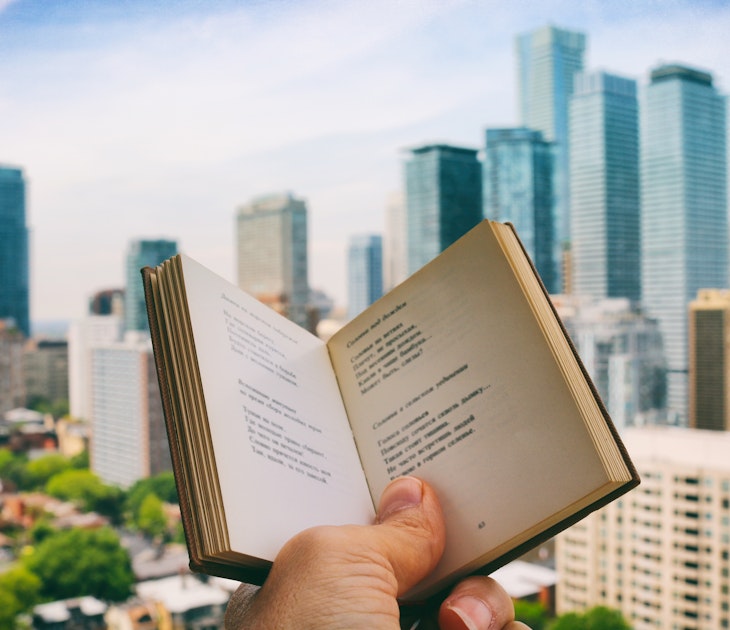
Nov 19, 2020 • 7 min read
Canada has many celebrated writers, and lots of quirky bookstores. This literary-themed itinerary takes you to the best of Canada's book scene.

Jun 5, 2024 • 11 min read

Jun 5, 2024 • 5 min read

Jun 5, 2024 • 8 min read

Jun 5, 2024 • 10 min read
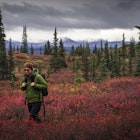
Jun 5, 2024 • 7 min read

Jun 5, 2024 • 17 min read

Jun 4, 2024 • 13 min read

IMAGES
VIDEO
COMMENTS
Amazing Books on Travel. New, Used & Rare Books. Buy Now.
The Tourist's Guide to Transylvania: A Traveller's Handbook Of Count Dracula's Kingdom Hardcover - March 1, 1981 by Stewart Cowley and Associates (Compiler) 4.9 4.9 out of 5 stars 23 ratings
Co-authored by former British Ambassador to Romania, Paul Brummell, Romania: Transylvania has been thoroughly updated by prolific travel writer Tim Burford, who wrote his first Romania guide in 1991. Transylvania (the 'land beyond the forest') is a wild, wooded, intensely romantic region, filled with mountains and gorges, myths and legends ...
Interesting little oddity, ostensibly for the Kid's market. Very large hardcover, glossy cover and paper, featuring reproductions of lots and lots of fantasy and horror artwork (book covers, interior illos, paintings) - hung together with a purported "tourist's guide" to Transylvania (becomes a bit of a stretch with some of the obviously sci-fi book covers and paintings - passed of as ...
Buy The Tourist's Guide to Transylvania: A Traveller's Handbook of Count Dracula's Kingdom by count-ignatius-de-ludes (ISBN: 9780861780761) from Amazon's Book Store. Everyday low prices and free delivery on eligible orders.
The Tourist's Guide to Transylvania: A Traveller's Handbook Of Count Dracula's Kingdom. Stewart Cowley and Associates (compiler) ... Rate this book. Write a Review. Friends & Following. Create a free account to discover what your friends think of this book! Community Reviews.
The Tourist's Guide to Transylvania: A Traveller's Handbook of Count Dracula's Kingdom on Amazon.com.au. *FREE* shipping on eligible orders. The Tourist's Guide to Transylvania: A Traveller's Handbook of Count Dracula's Kingdom
There is a newer edition of this item: Romania: Transylvania (Bradt Travel Guides) £17.47. This title will be released on March 15, 2024. This new, third edition of Bradt's Romania: Transylvania remains the only standalone English language guide to this legendary and enchanting region. Comprehensive chapter-per-county coverage is offered ...
Tourist's Guide to Transylvania [Cowley, Stewart] on Amazon.com.au. *FREE* shipping on eligible orders. Tourist's Guide to Transylvania
About this book. This new, third edition of Bradt's Romania: Transylvania remains the only standalone English language guide to this legendary and enchanting region. Comprehensive chapter-per-county coverage is offered, including details to cater for the diverse range of travellers to the region, from city breaks to rural escapes, ski ...
Book Description Oversize Hardback. Condition: Very Good. No Jacket. A clean, unmarked book with a tight binding. 9 3/8"w x 12 3/4"h. 80 pages. ... In the Tourist's Guide to Transylvania he provides an illuminating introduction to this extraordinary land and the fascinating diversity of its supernatural denizens. . In addition to suggesting ...
The Tourist's Guide to Transylvania: A Traveller's Handbook of Count Dracula's Kingdom Hardcover - January 1, 1981 by Count Ignatius de Ludes (Author) 4.9 4.9 out of 5 stars 23 ratings
1. The tourist's guide to Transylvania: a traveller's handbook of Count Dracula's kingdom. 1981, Octopus, Brand: Octopus Books Limited, Octopus Books Limited. in English. 0706416023 9780706416022.
The perfect trip for those that are looking for sun, sea and sand while also getting to know the culture and history of both Bulgaria and Romania. Start and end in Bucharest and discover Constanta, Sunny Beach, Nessebar, Burgas and Madara Rider. view trip ⤍. 8 days / from1944 USD. The legend of Dracula.
Buy Tourist's Guide to Transylvania by Stewart Cowley online at Alibris. We have new and used copies available, in 1 editions - starting at $51.00. Shop now.
Buy The Tourist's Guide to Transylvania by Cowley, Stewart (ISBN: 9780706416022) from Amazon's Book Store. Everyday low prices and free delivery on eligible orders.
Transfăgărășan reaches an altitude of 2042 meters (over 6000 ft) and remains, until today, one of the must-see places in Romania. A favorite holiday activity in Transylvania. BÂLEA LAKE - At the highest point of the Transfăgărășan highway, you will find this uncommon glacier lake.
A clean, unmarked book with a tight binding. 9 3/8"w x 12 3/4"h. 80 pages. Many full page color illustrations. "Count Ignatius de Ludes is a sorcerer of cons
Transylvania is a wild, wooded, intensely romantic region, filled with mountains, gorges, myths and legends, dragons, wolves and vampires. This new edition of the hugely popular and personal guide to the romantic Transylvania region covers a whole range of attractions from creepy castles to medieval landscapes populated by vampires, bears and wolves.
explore the beautiful places -. at it's best. book your trip now! Embark on a journey to explore the enchanting landscapes and historic fortresses of Transylvania, guided by our amiable and knowledgeable guides, Maria and Alex. Select your preferred tour today and immerse yourself in the region's captivating beauty and rich history.
Sing 2. Spider-Man: Into the Spider-verse. The Parent Trap. Toy Story. Trolls Band Together. Wish. Wonder. Wonka. The Southwest Inflight Entertainment Portal also features On Demand TV series like Cocomelon, Firebuds, Learn with ABC Mouse, and Looney Tunes Cartoons to offer fun for the whole family.
Pat Tompkins. Pat Tompkins has written for Afar about movies, books, art, UNESCO World Heritage sites, and other topics. Add these nine new travel books to your summer reading list, including a photography book to inspire a trip to Portugal, a historical mystery set in Sicily, and an illustrated guidebook to New York City.
A book-lover's guide to Canada from coast to coast. Nov 19, 2020 • 7 min read. Canada has many celebrated writers, and lots of quirky bookstores. This literary-themed itinerary takes you to the best of Canada's book scene. Tips & Advice. 8 places that locals go for a vacation in the USA.
TRANSLYVANIA TRAVEL GUIDE: The Ultimate Pocket Guide to The City of Dracula's Tales, Comfortable Hotels/Resorts, Historic Folklores, Colorful ... trip to Transylvania (My Tourist Adventures) [WORLD, DISCOVER] on Amazon.com. *FREE* shipping on qualifying offers. TRANSLYVANIA TRAVEL GUIDE: The Ultimate Pocket Guide to The City of Dracula's Tales, Comfortable Hotels/Resorts, Historic Folklores ...
Order your copy of "Bangkok Travel Guide" today and let the journey begin. And remember, it's not just a book; it's the key to unlocking a world of infinite possibilities. Read more. Previous page. Print length. 154 pages. Language. English. Sticky notes. On Kindle Scribe. Publication date. May 12, 2024. File size. 467 KB. Page Flip.